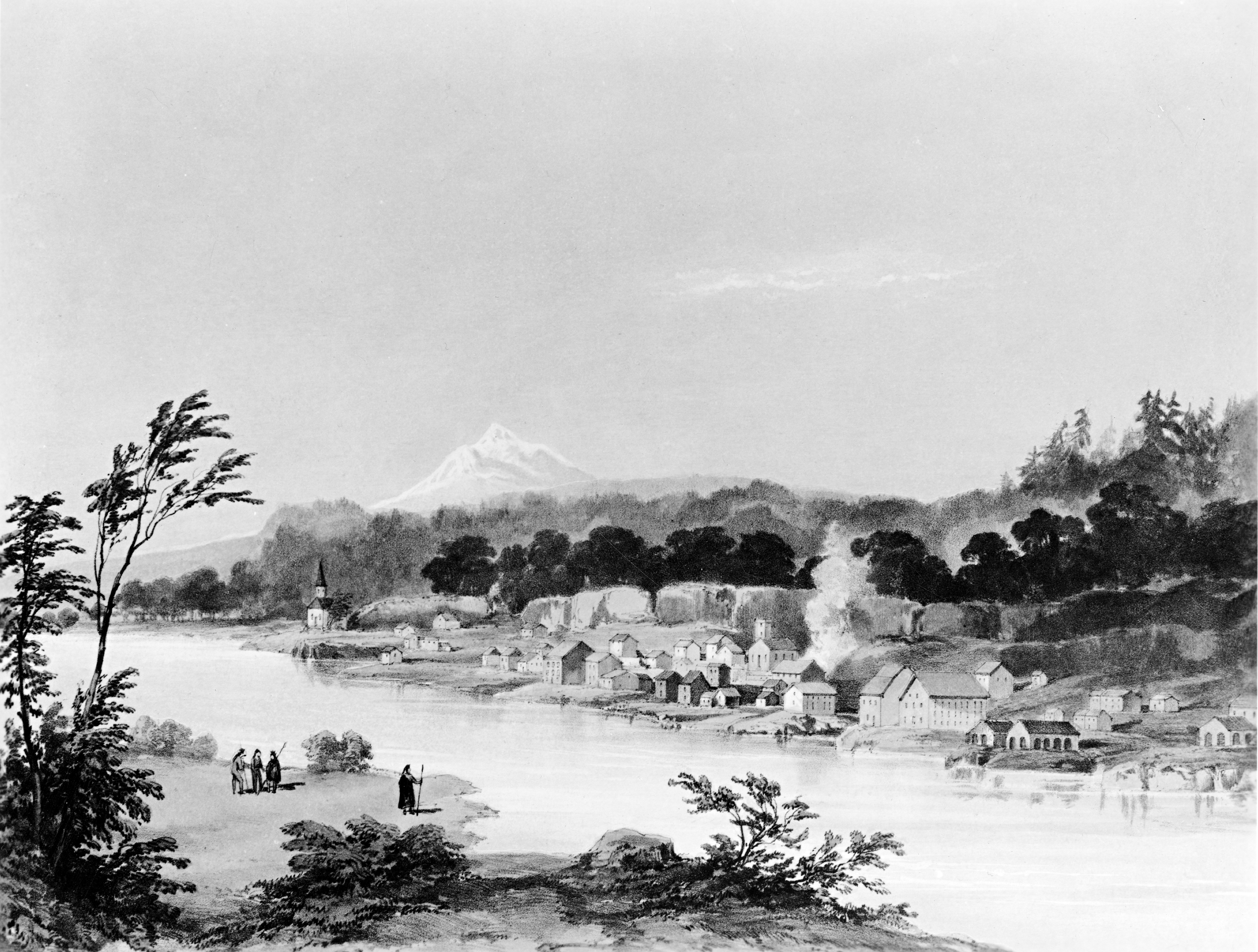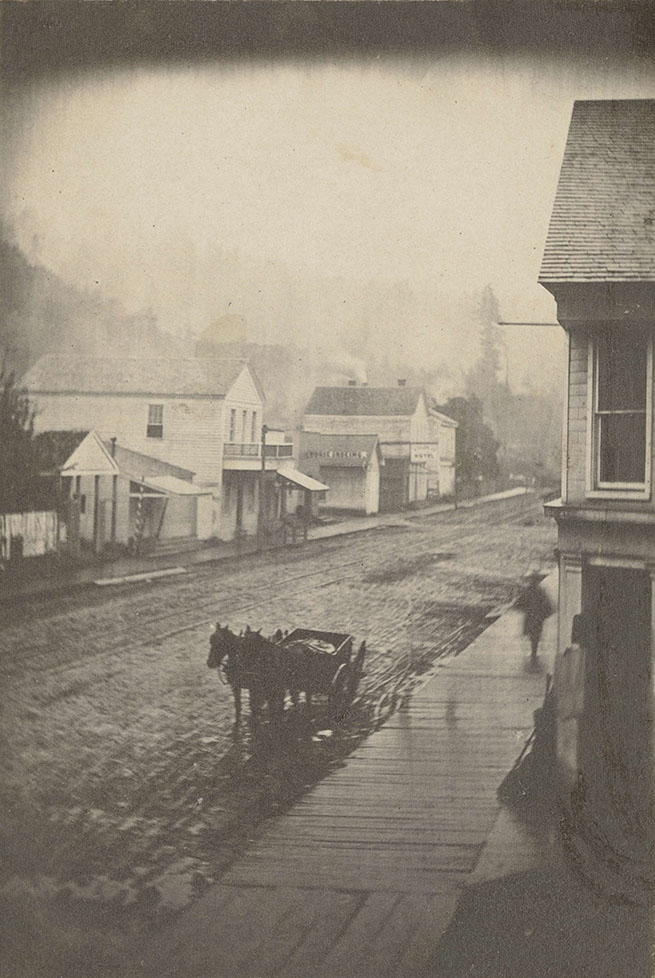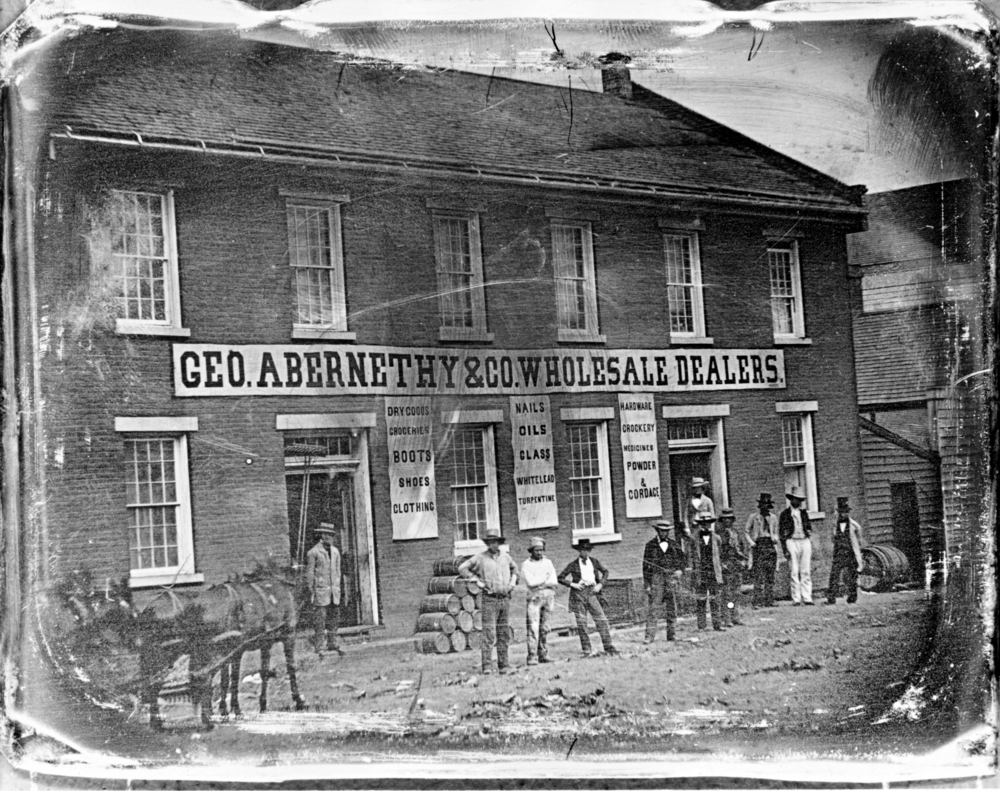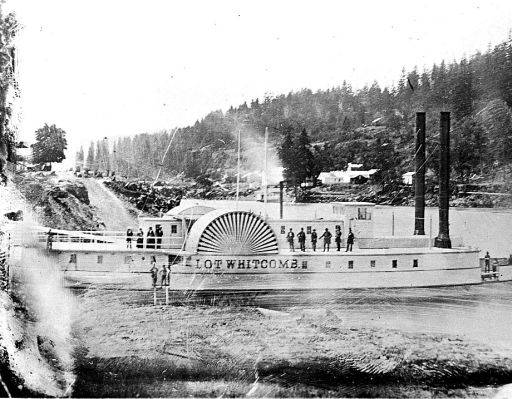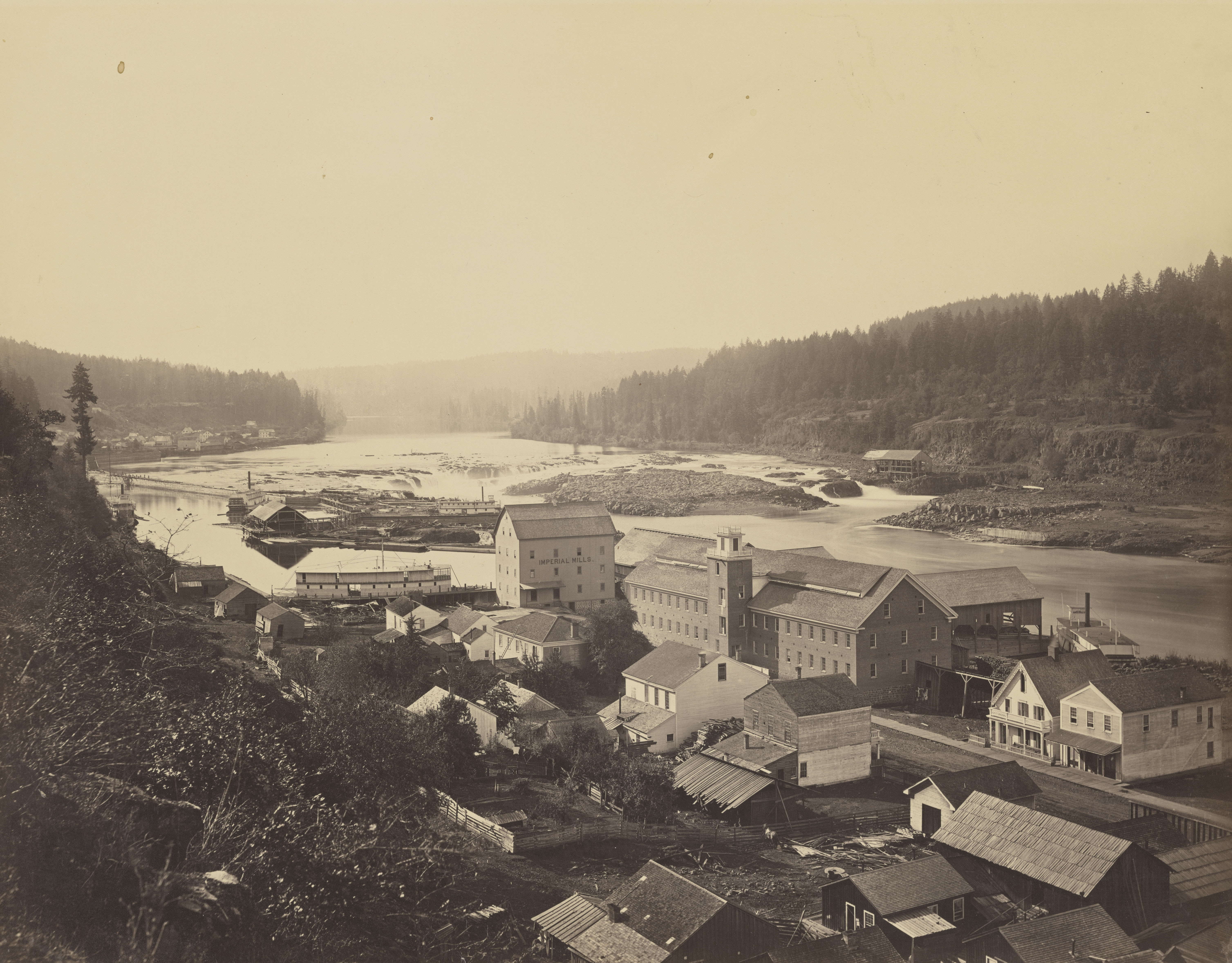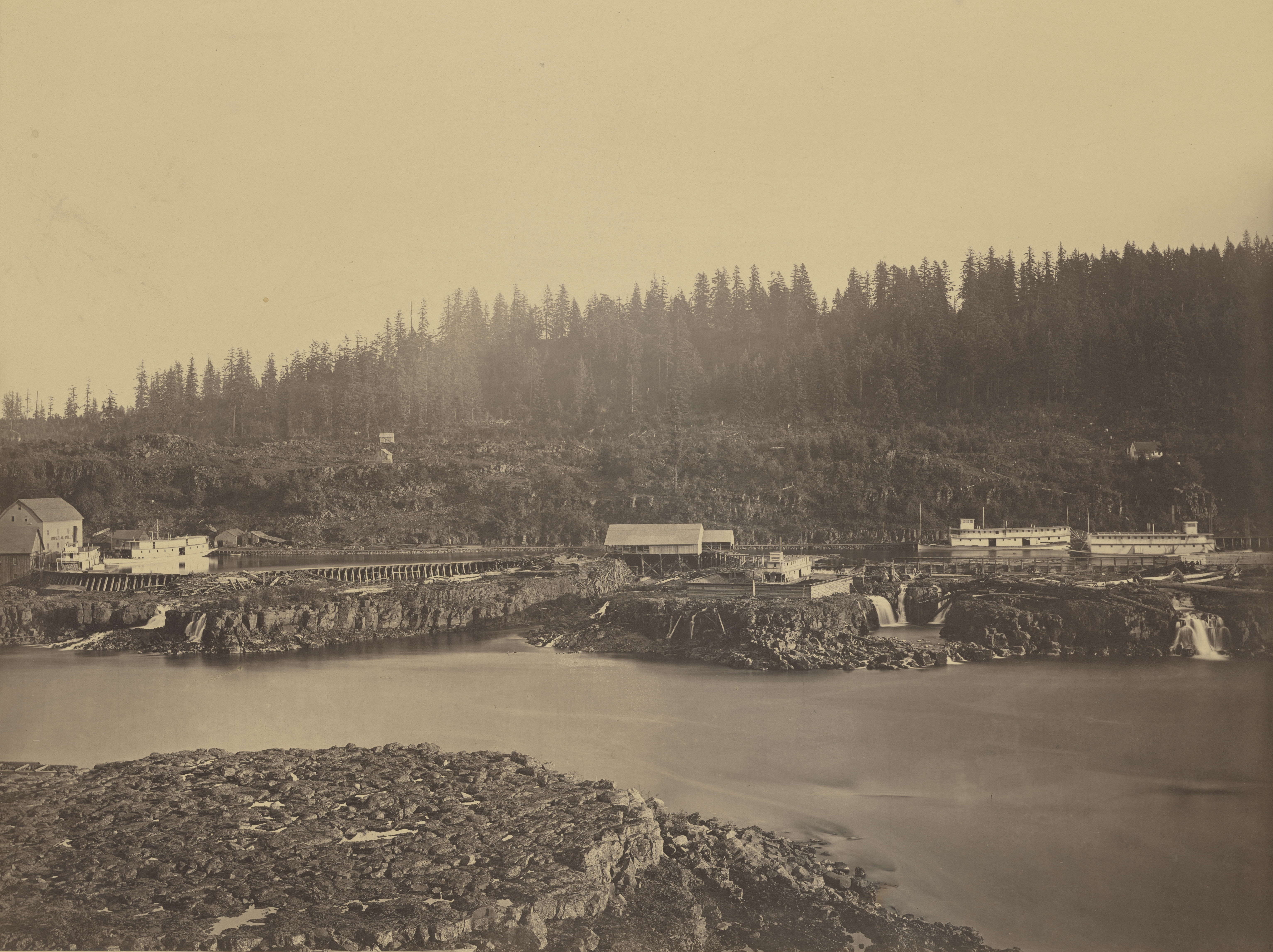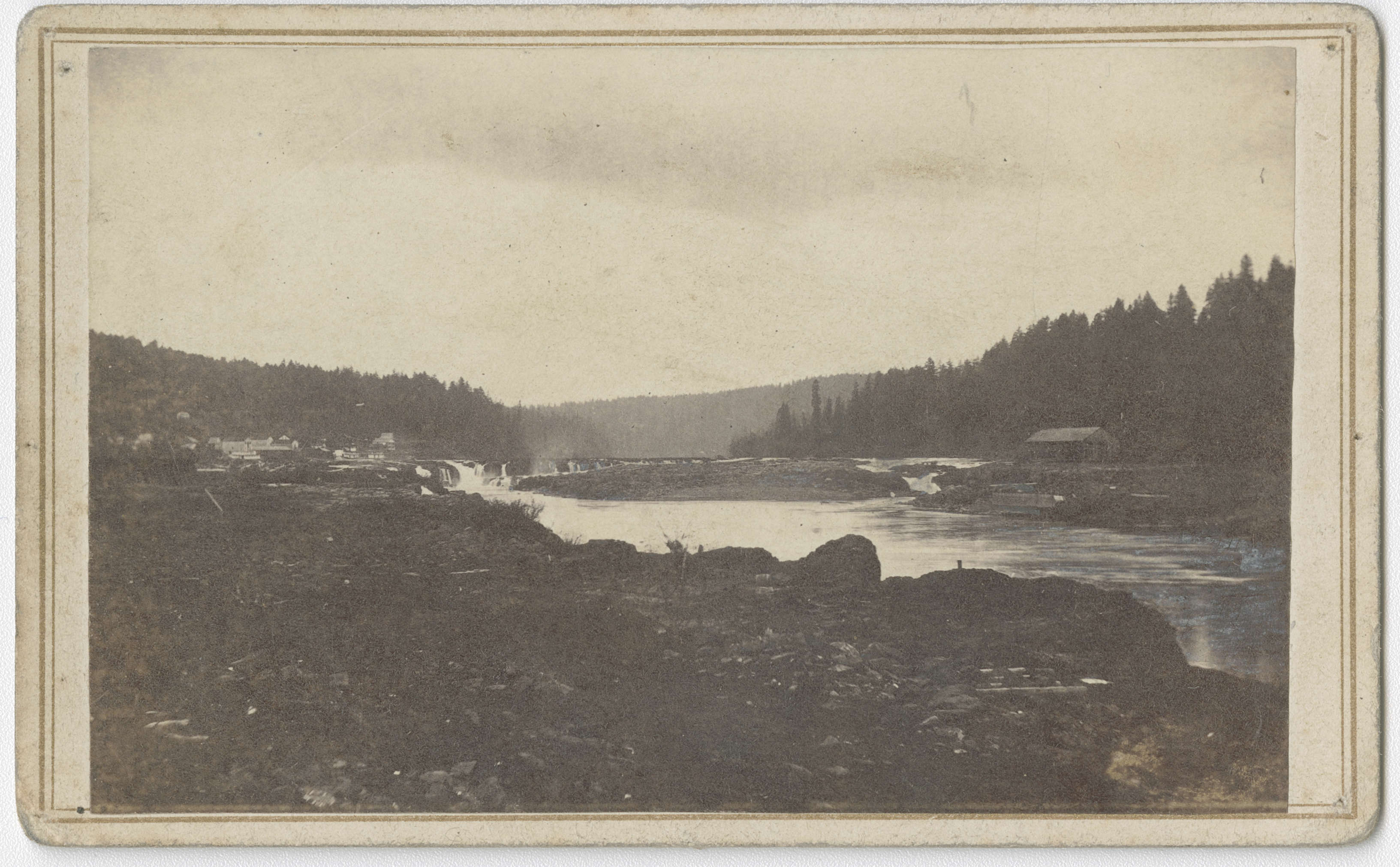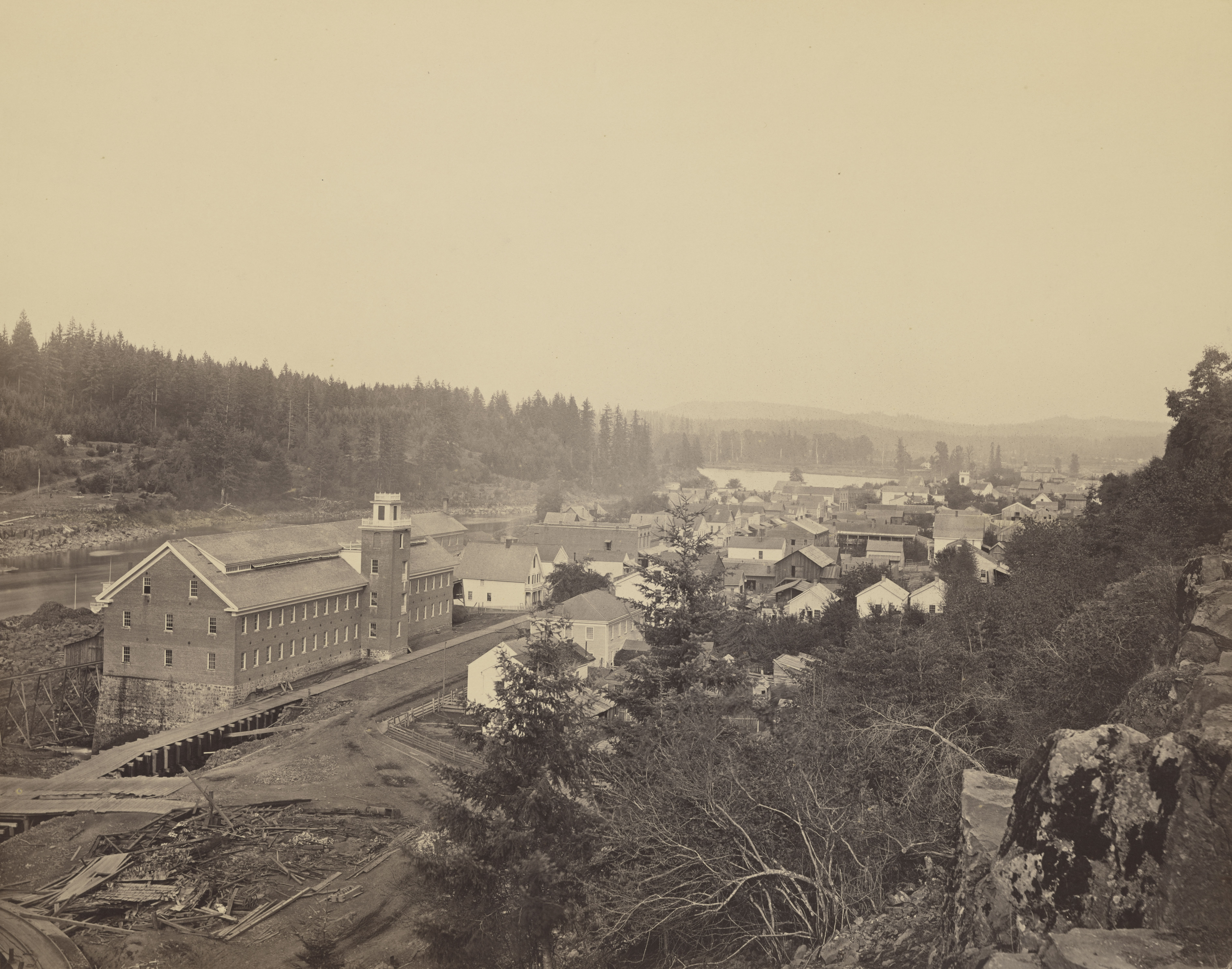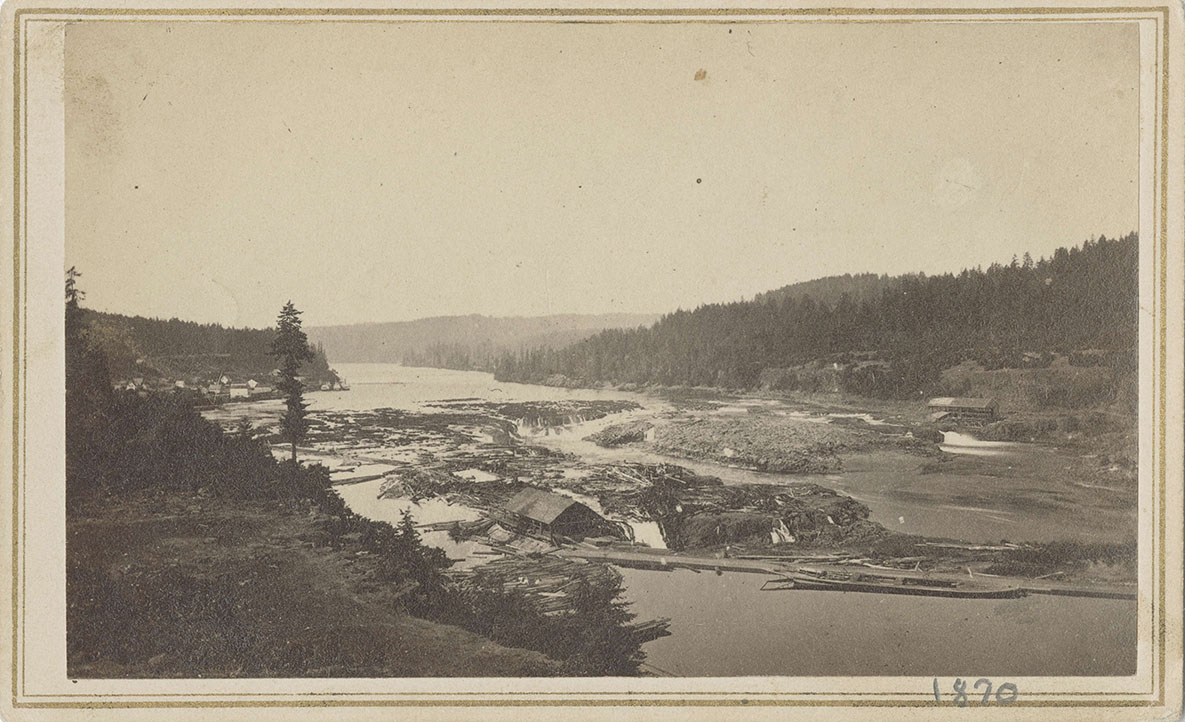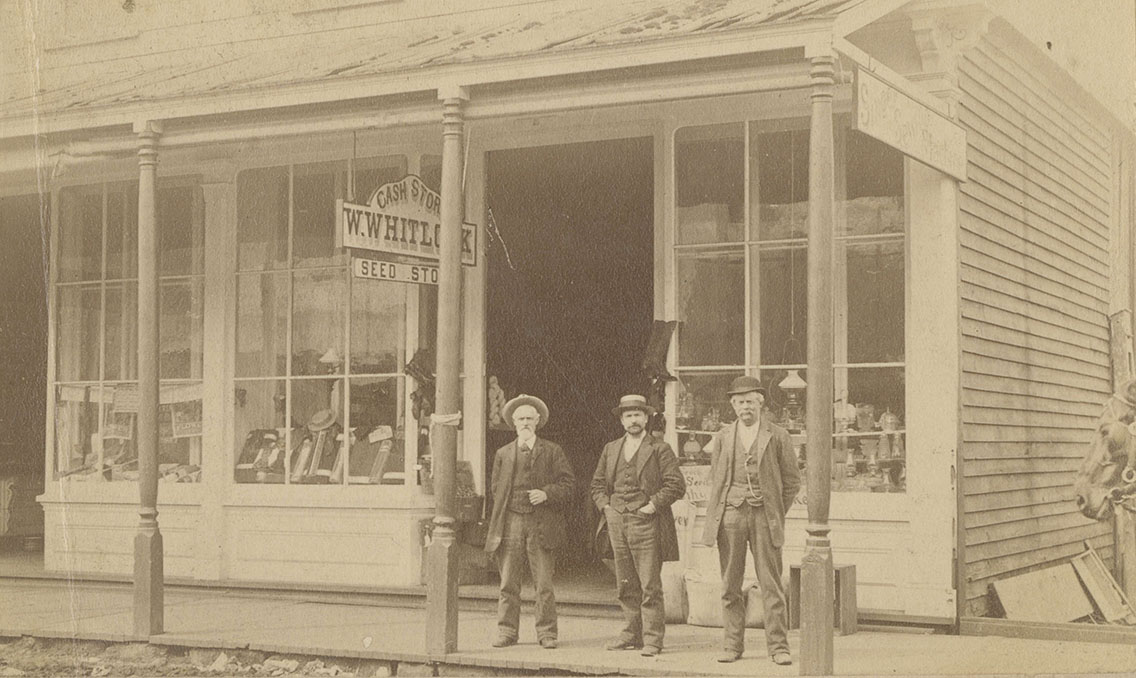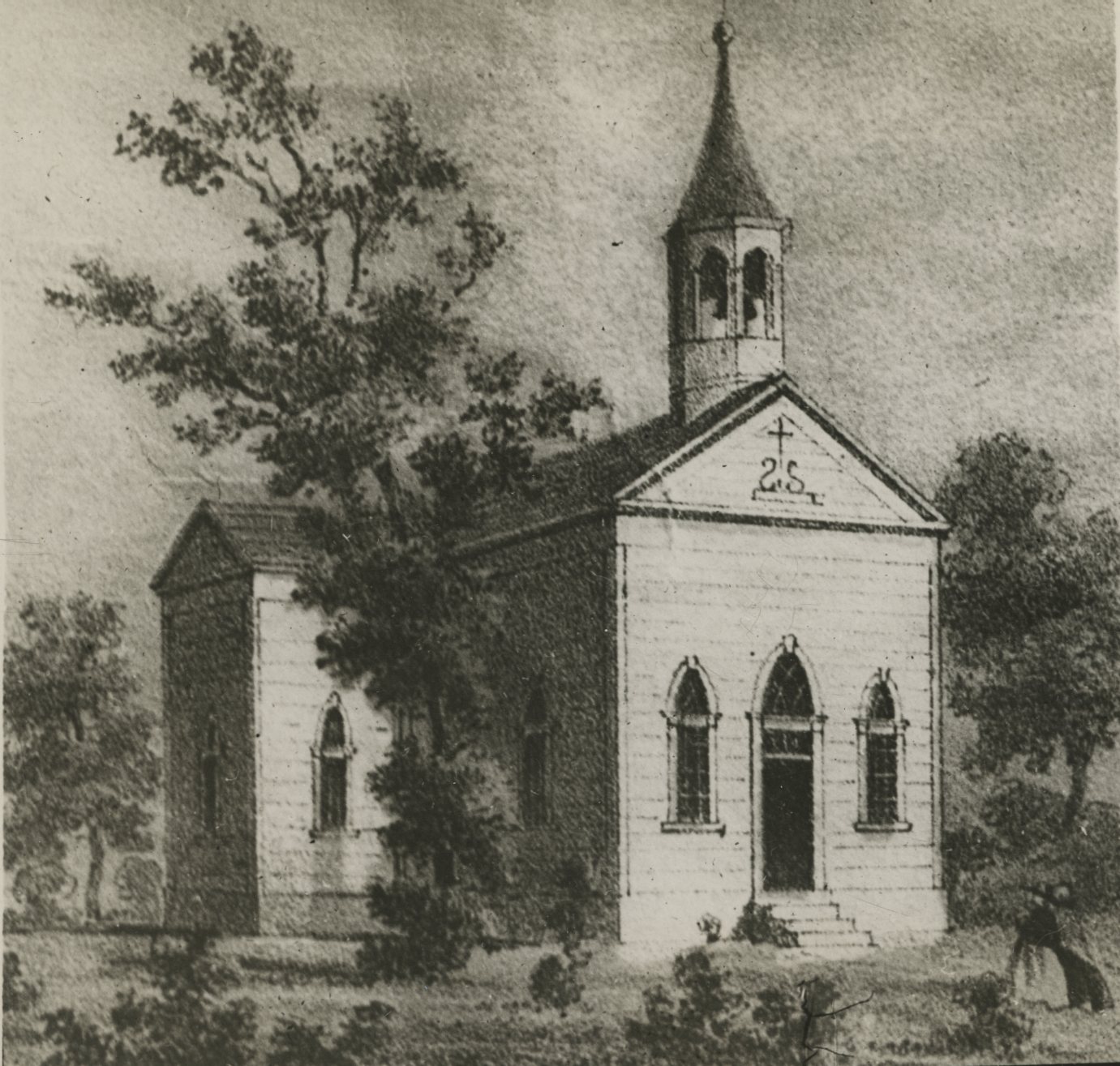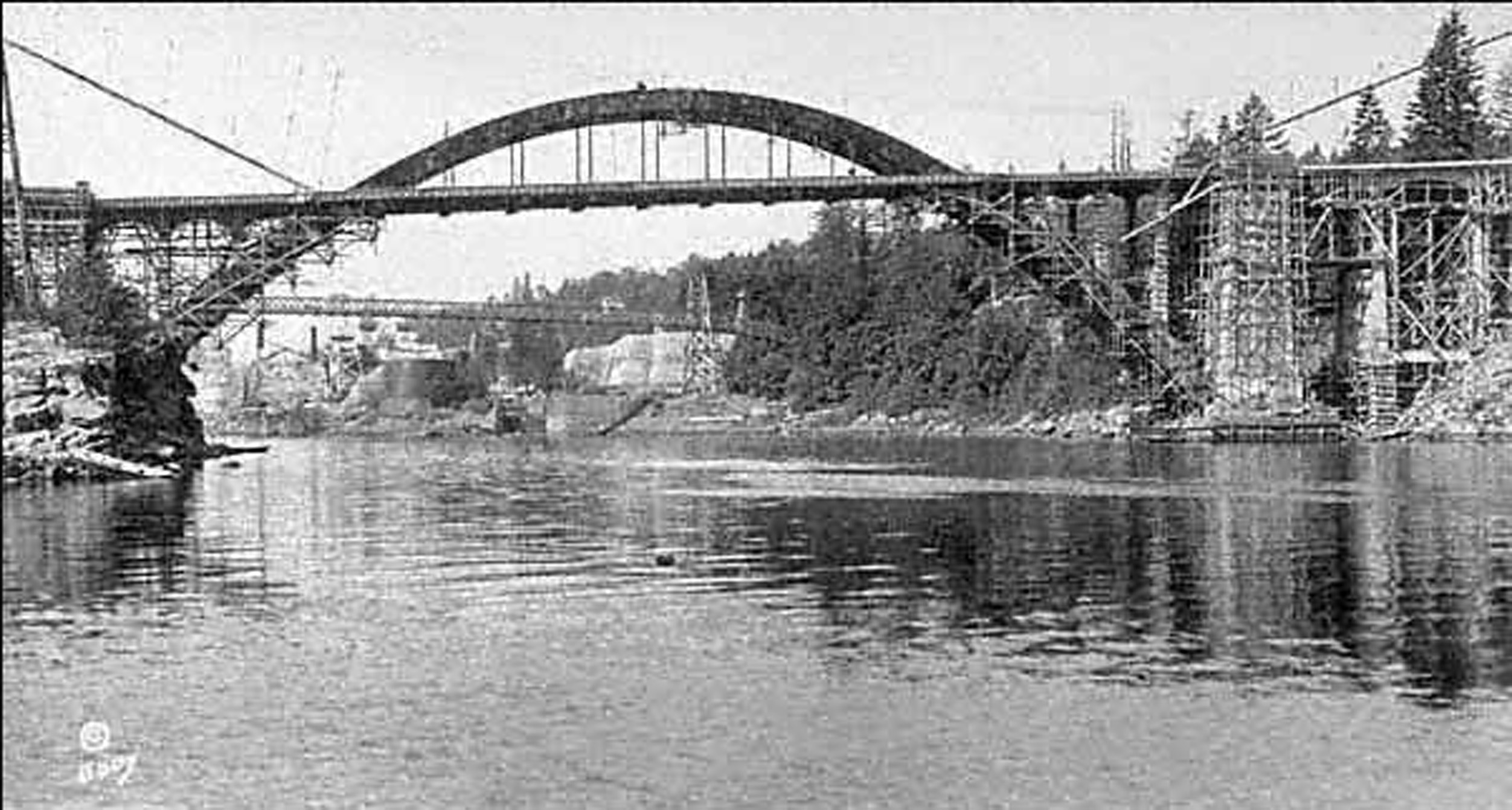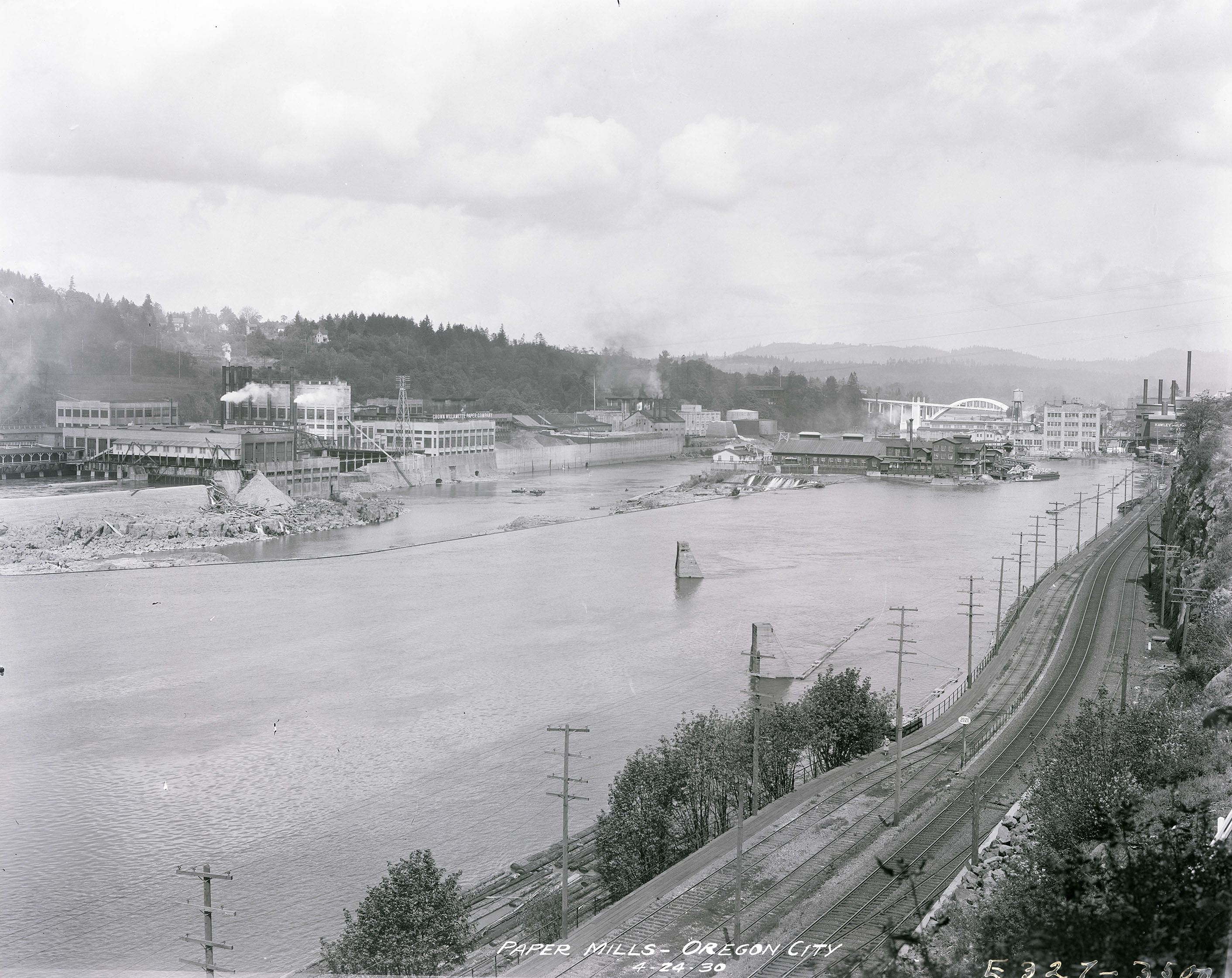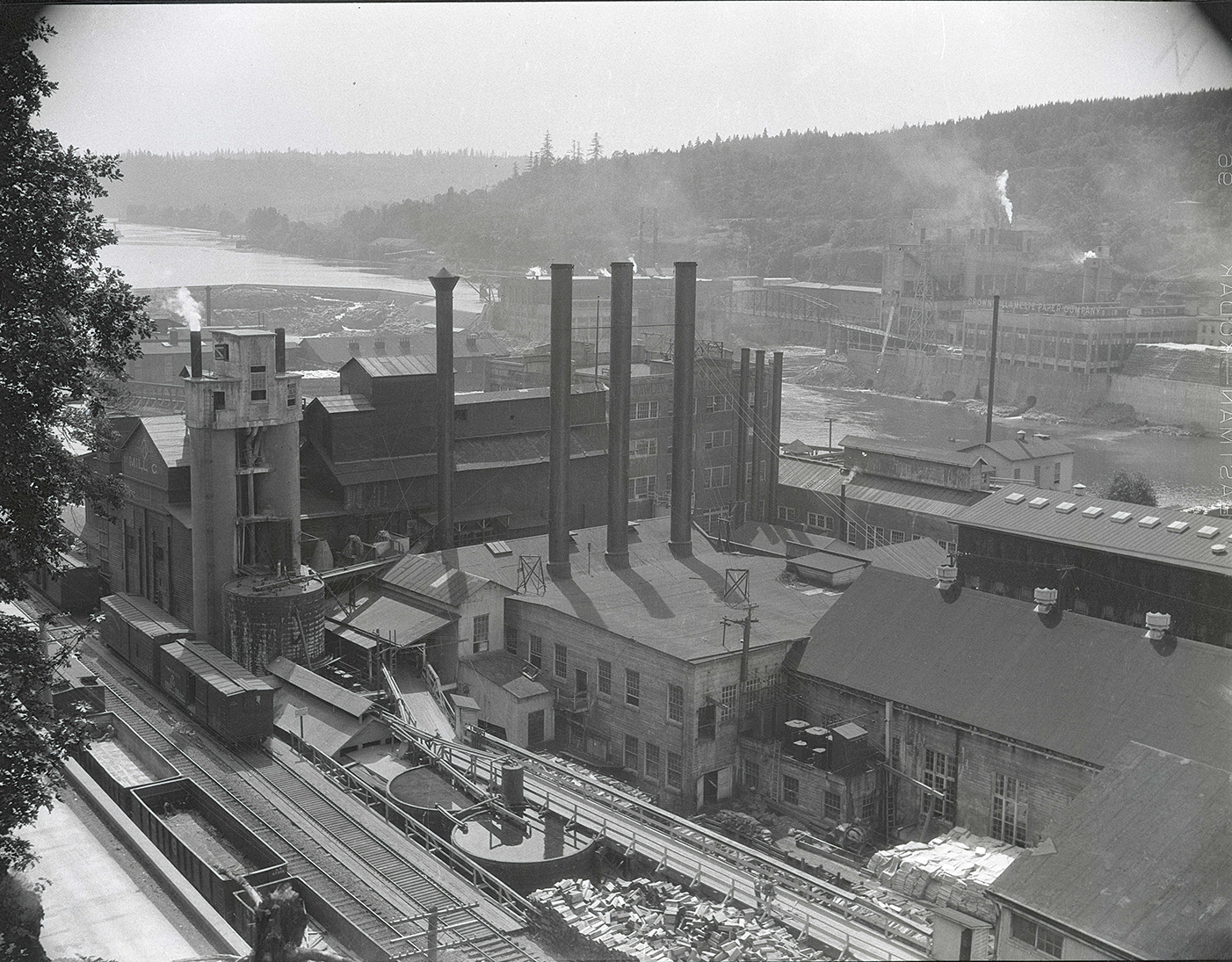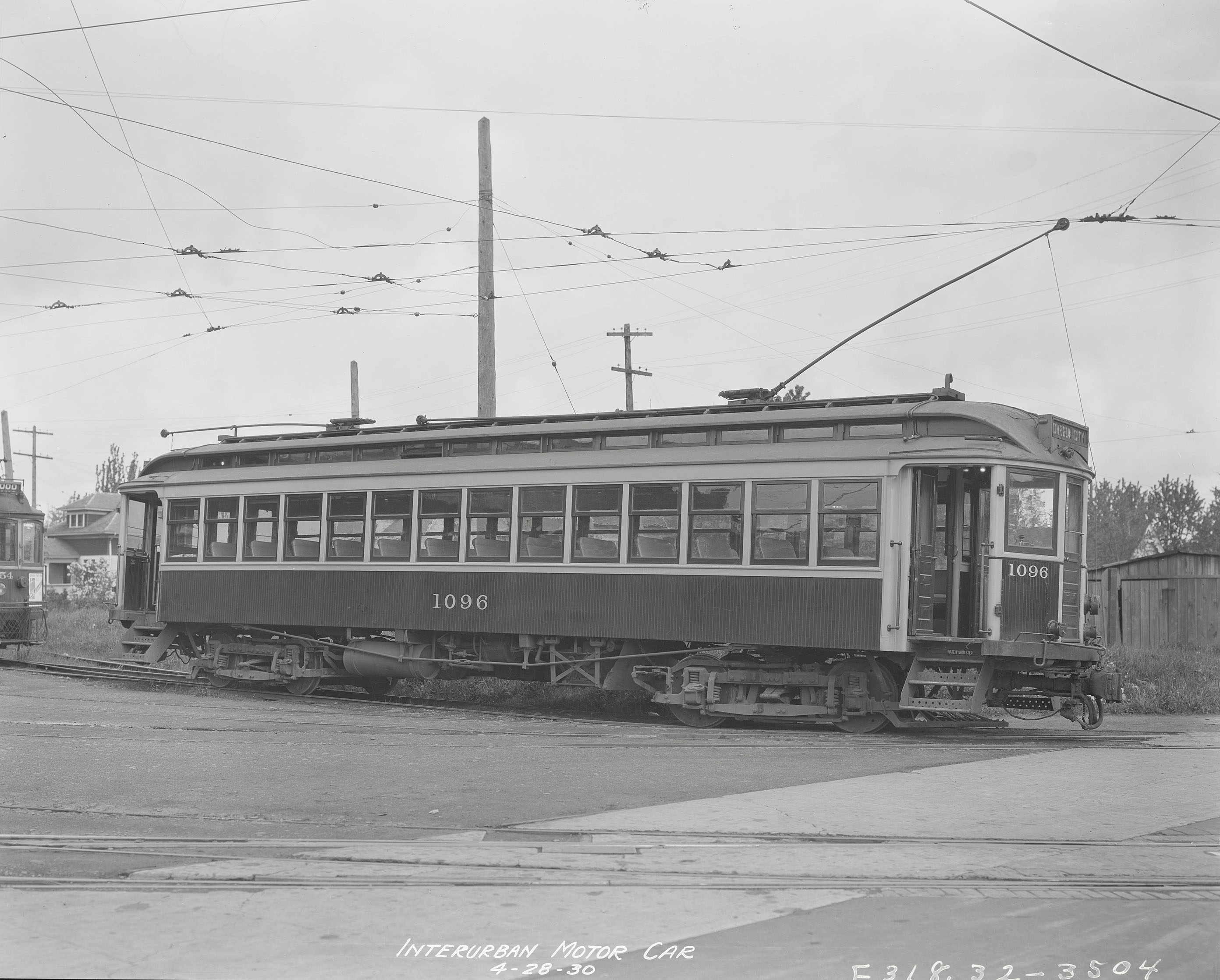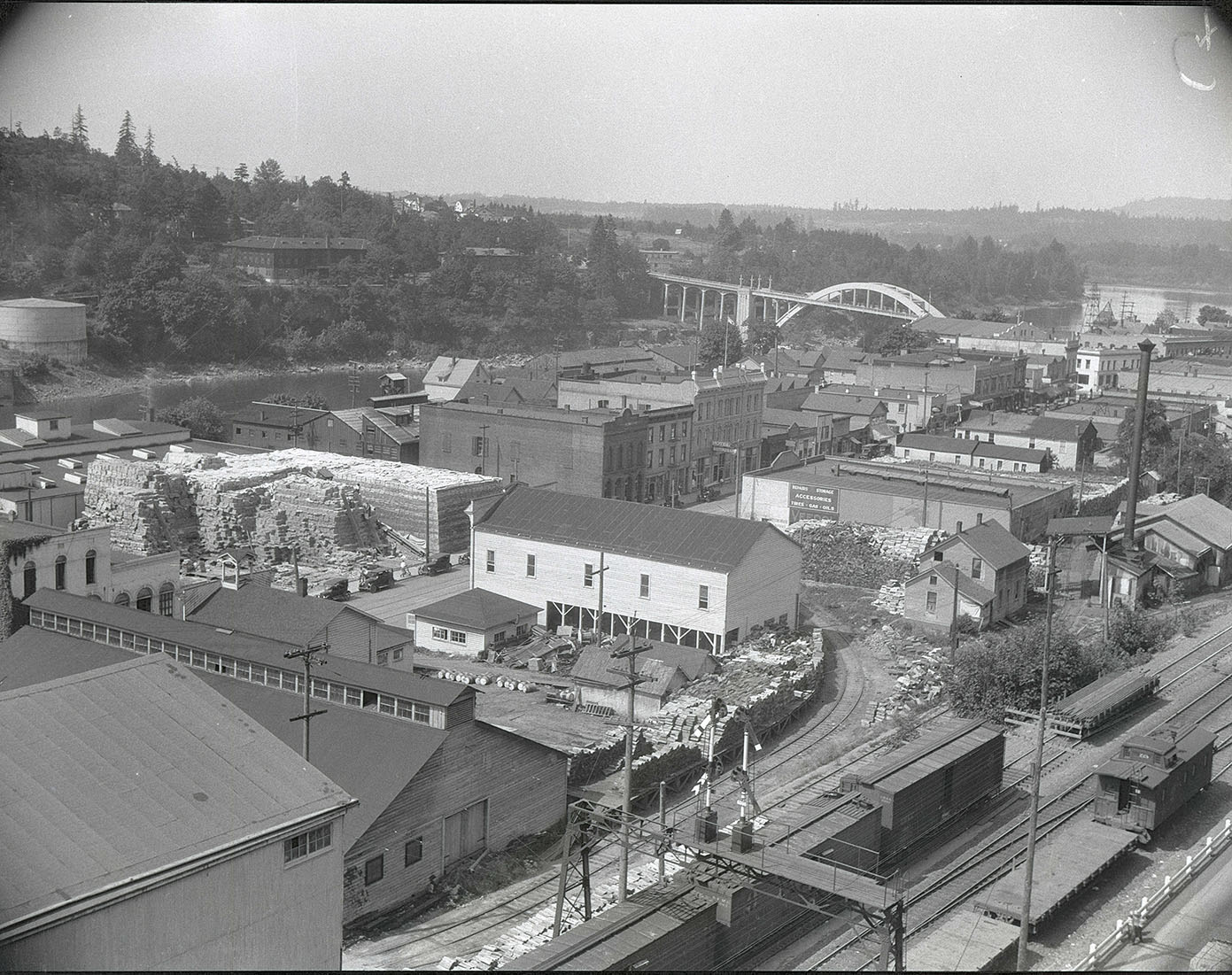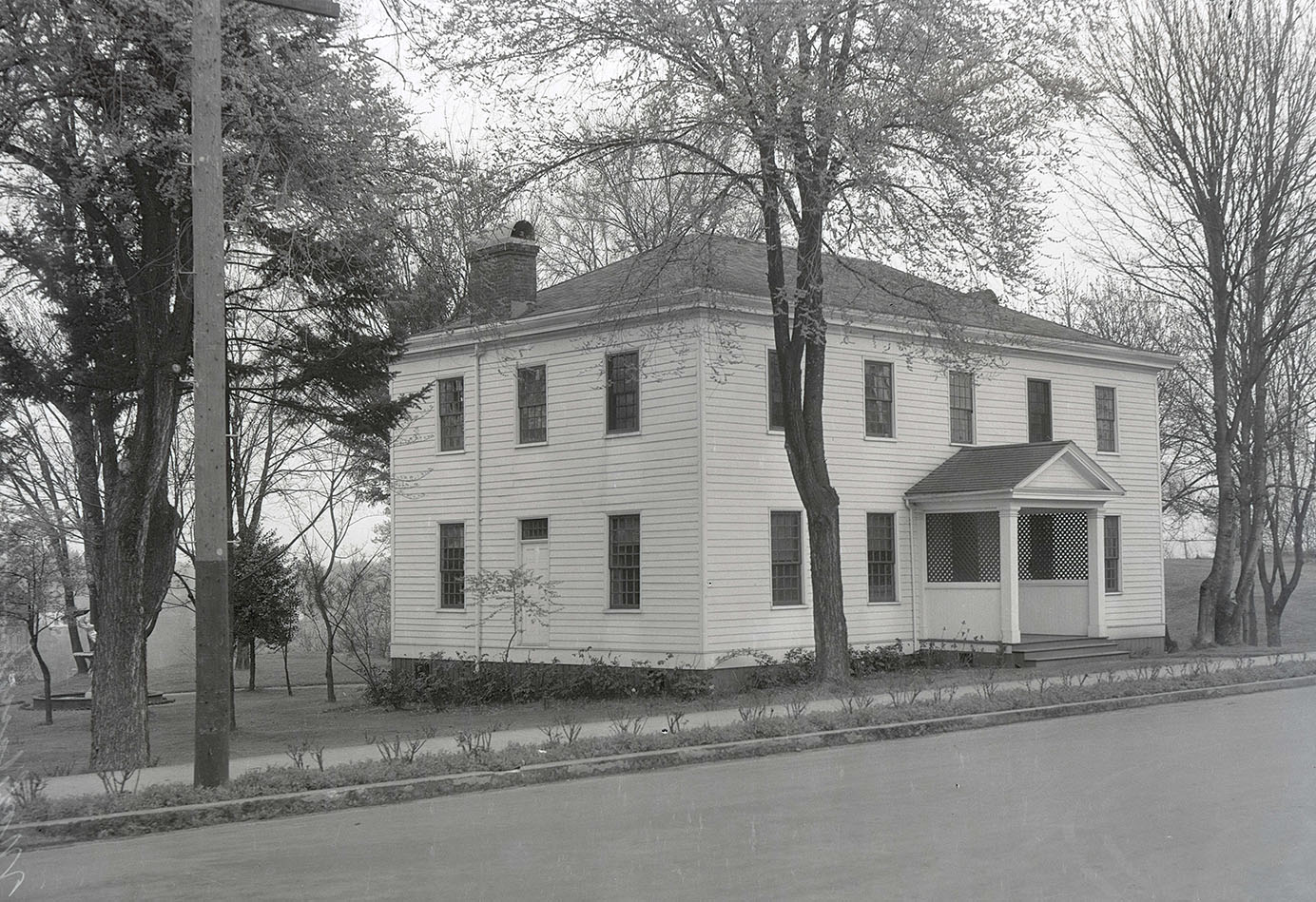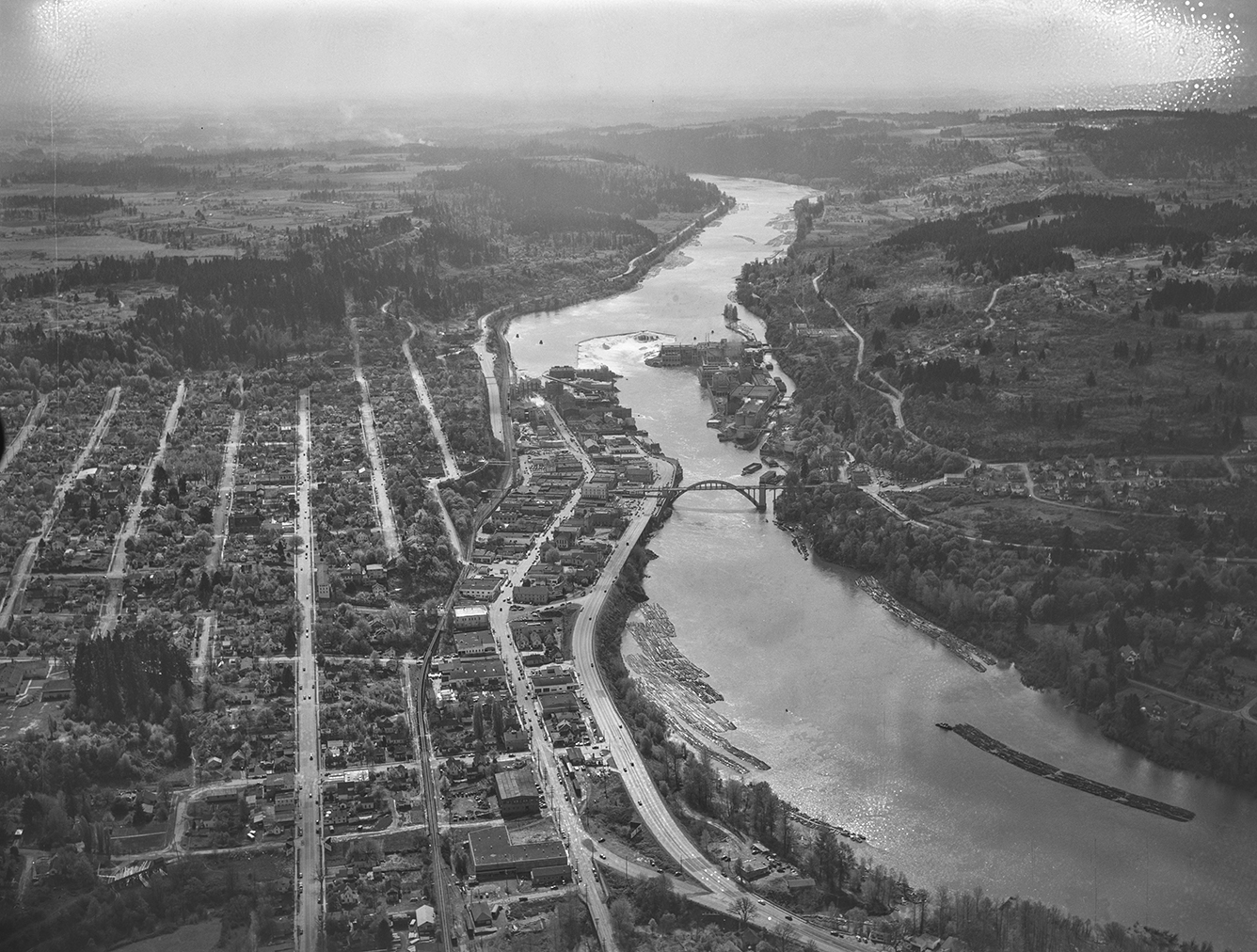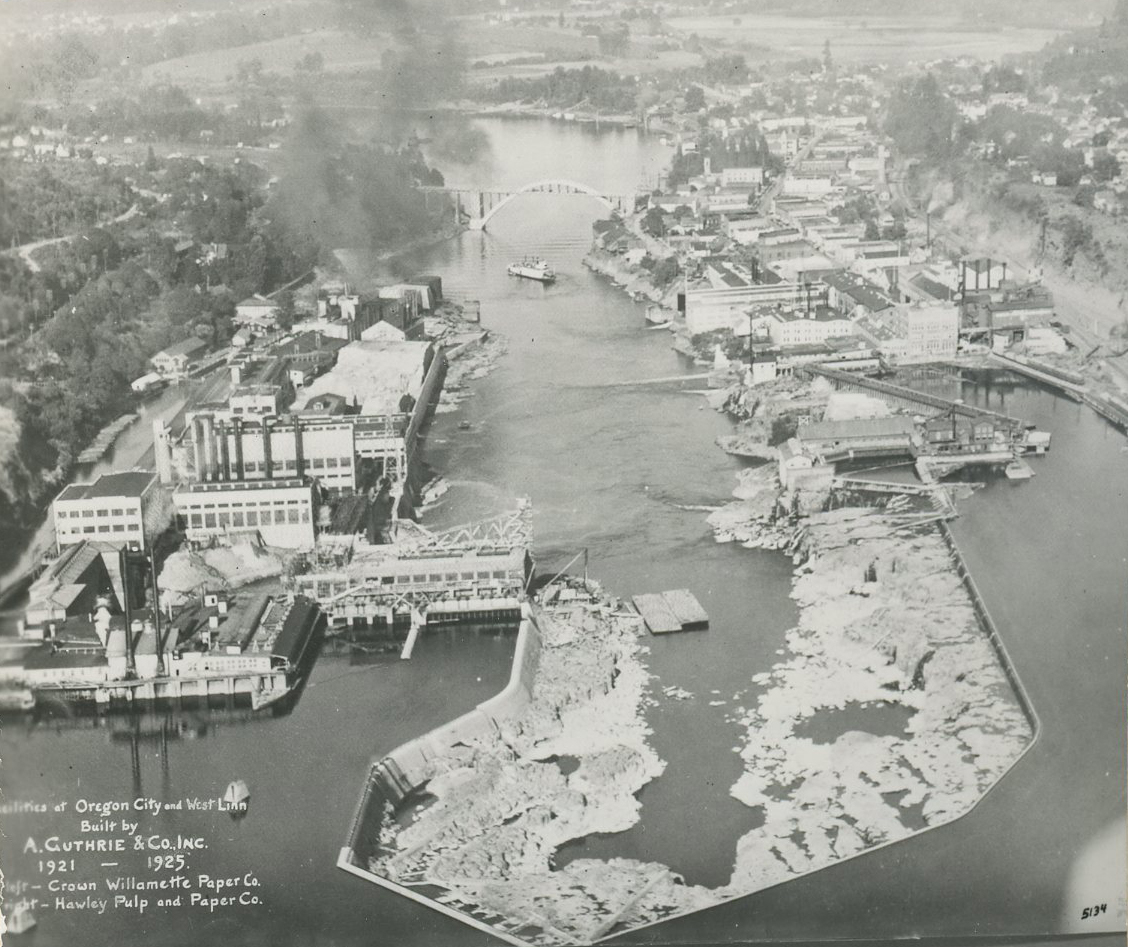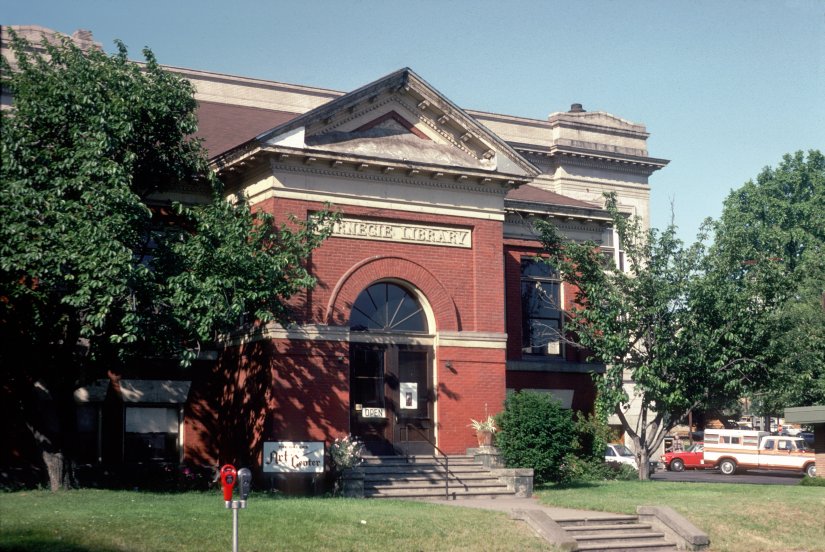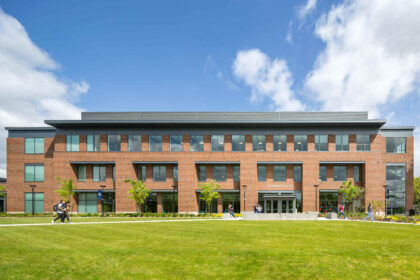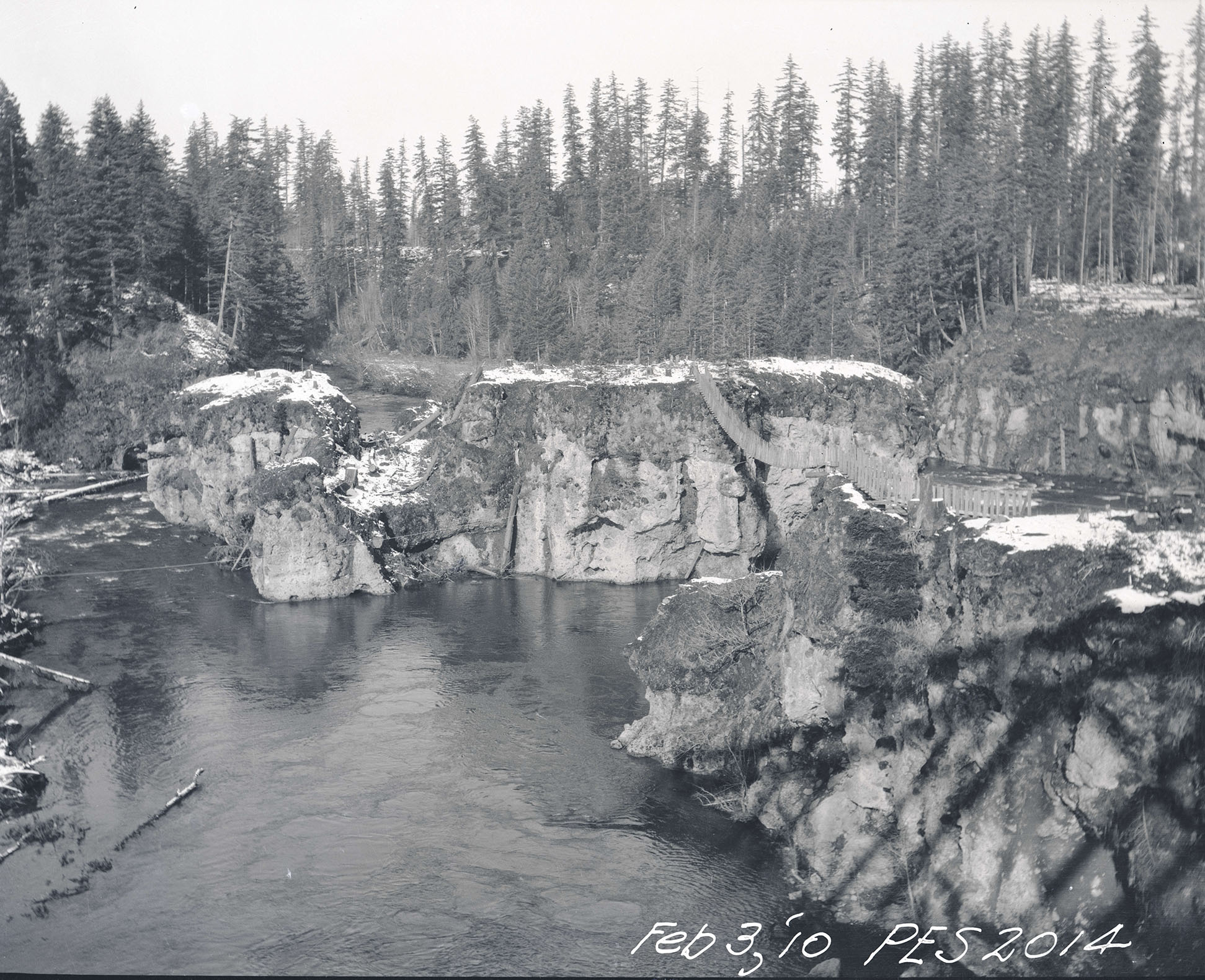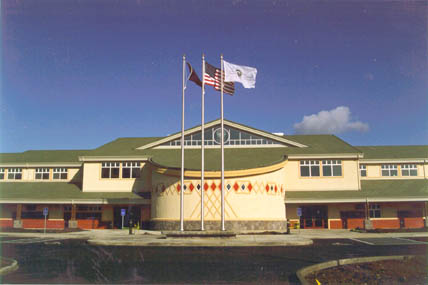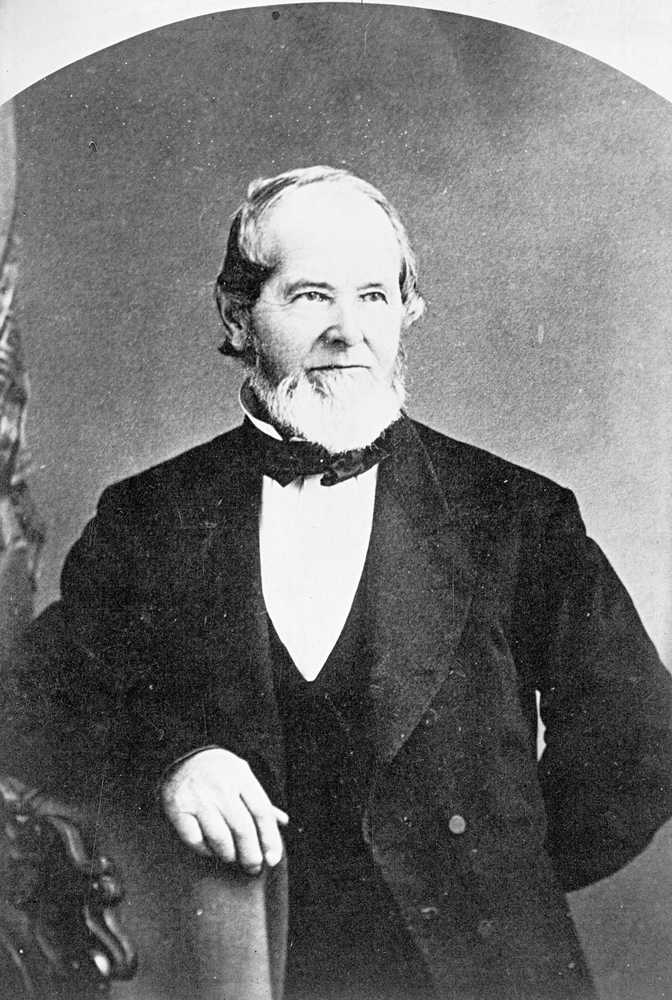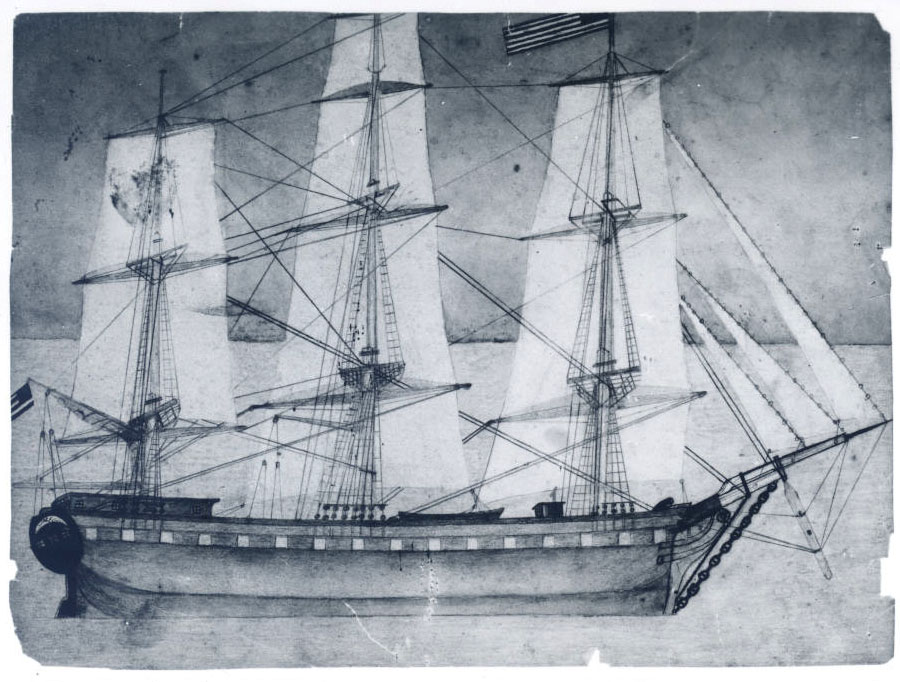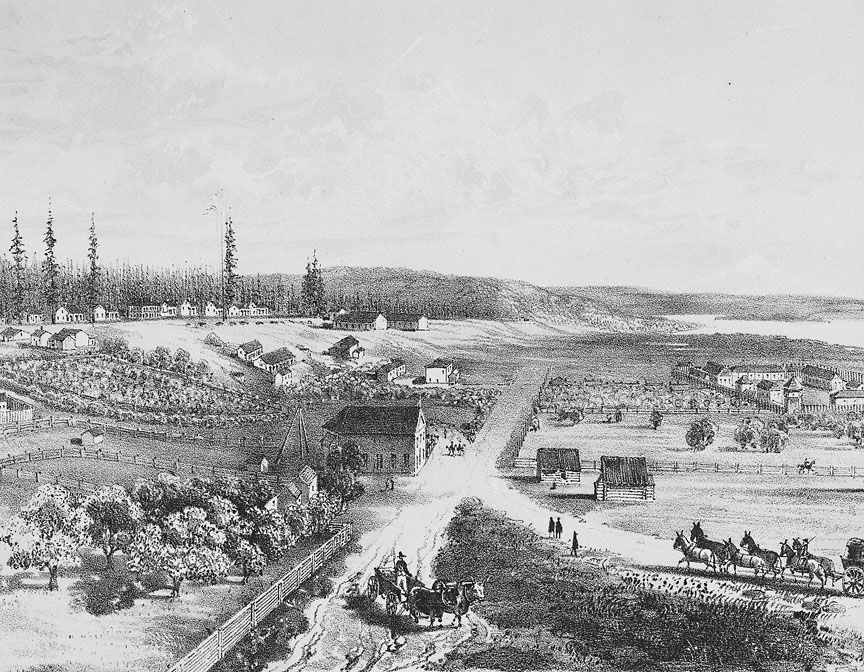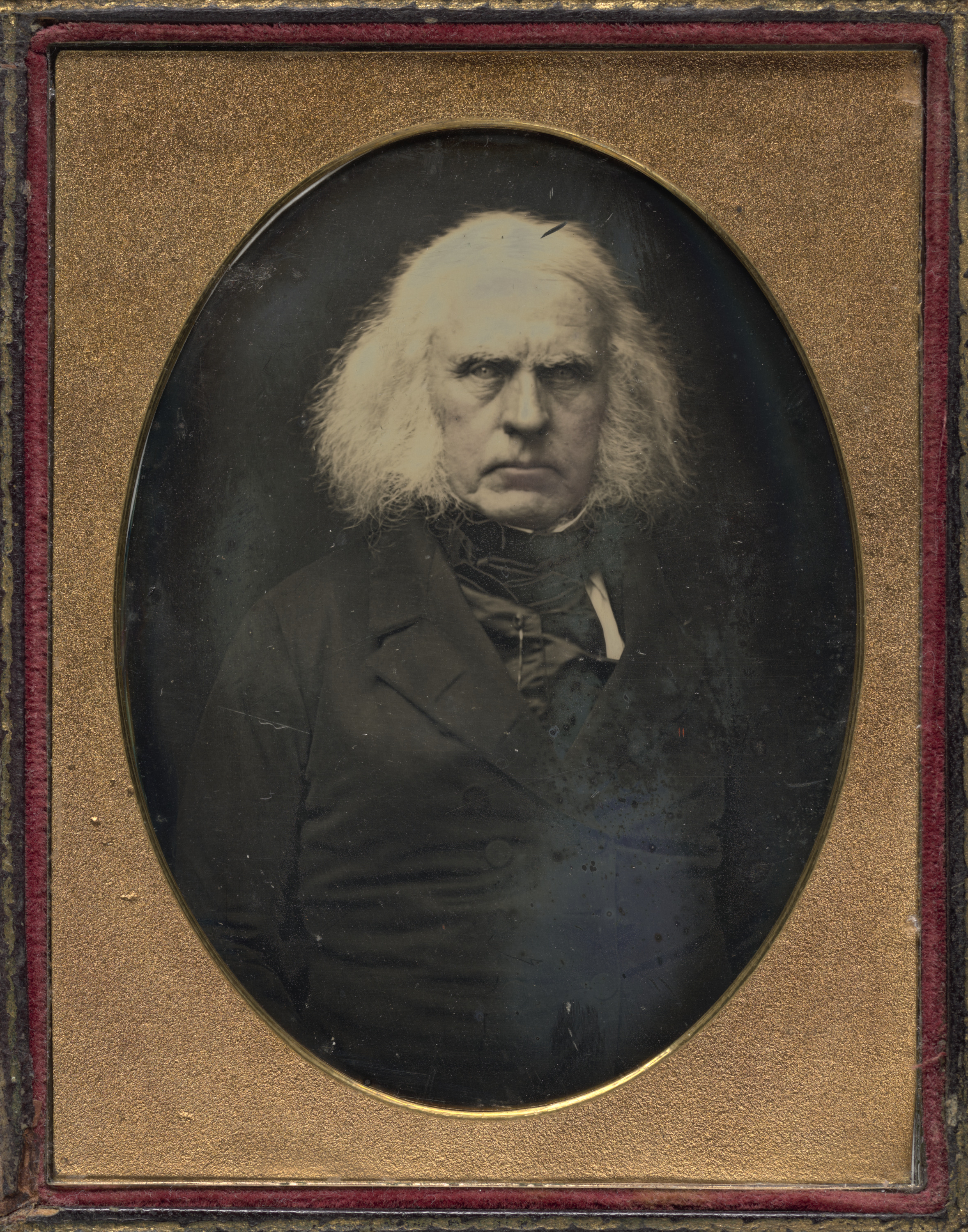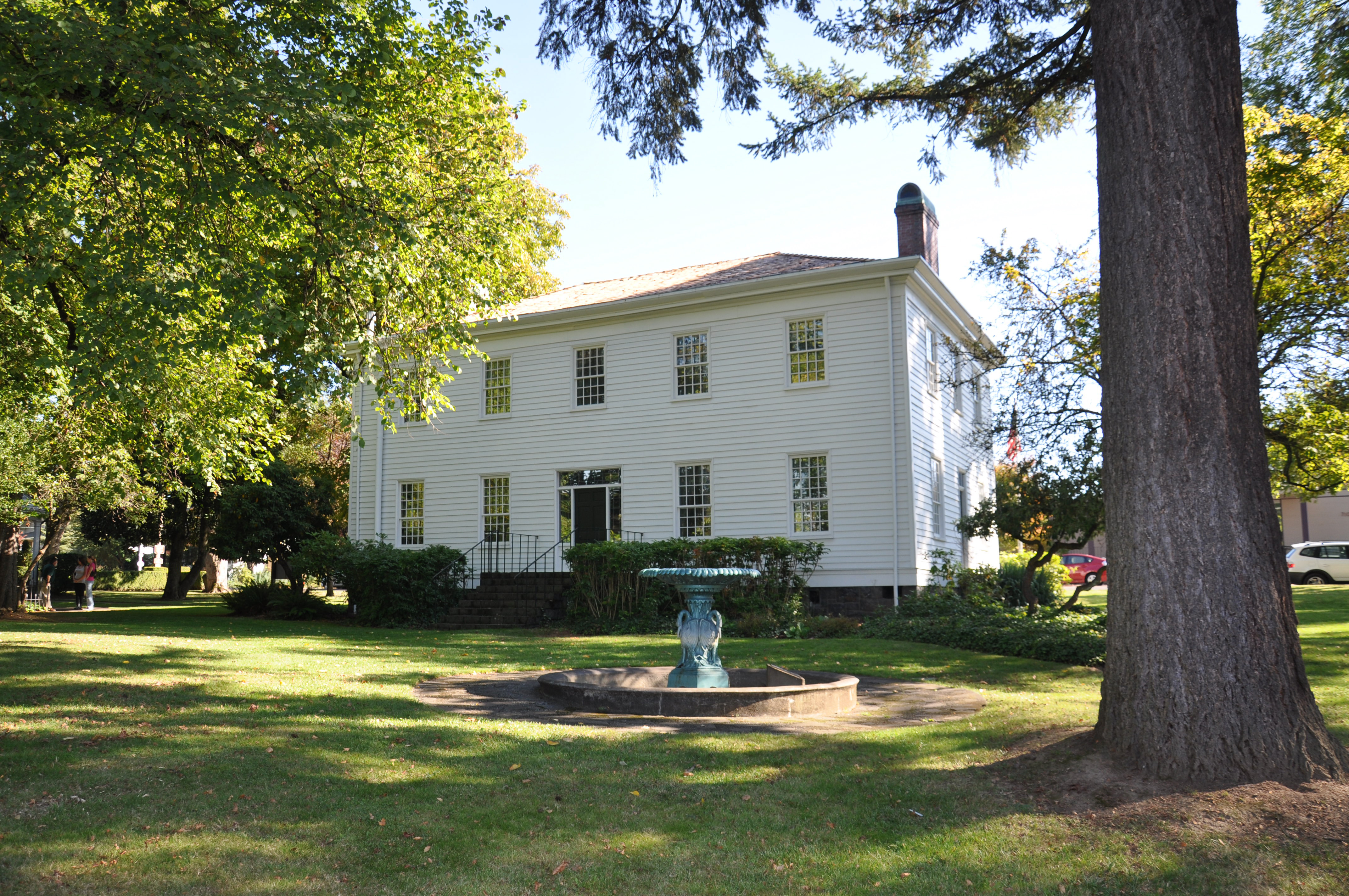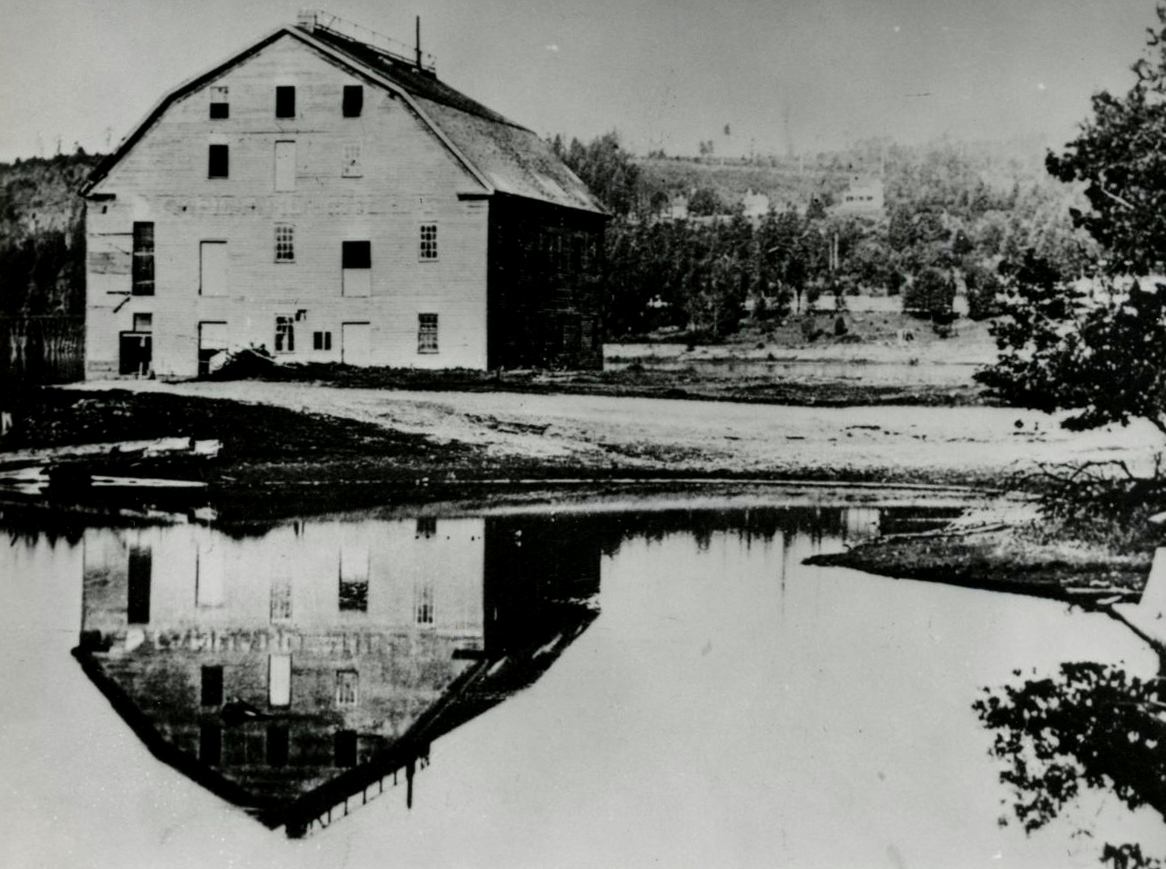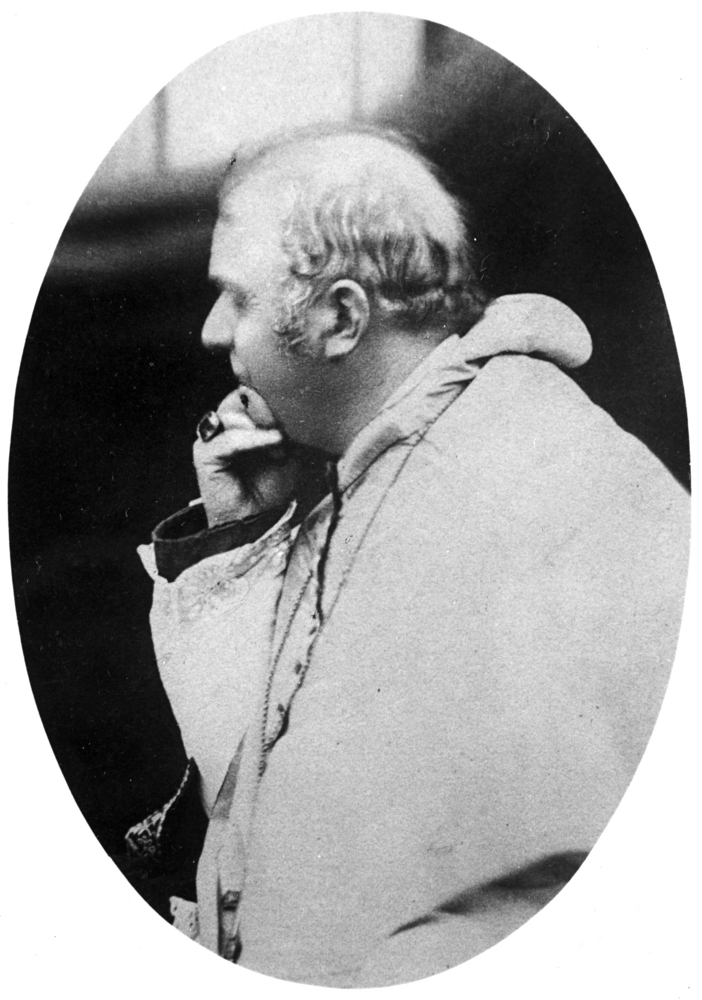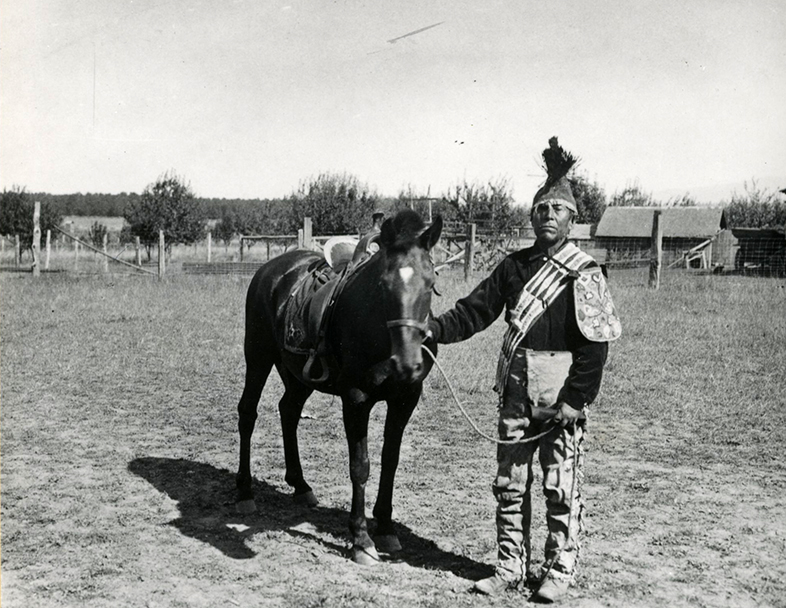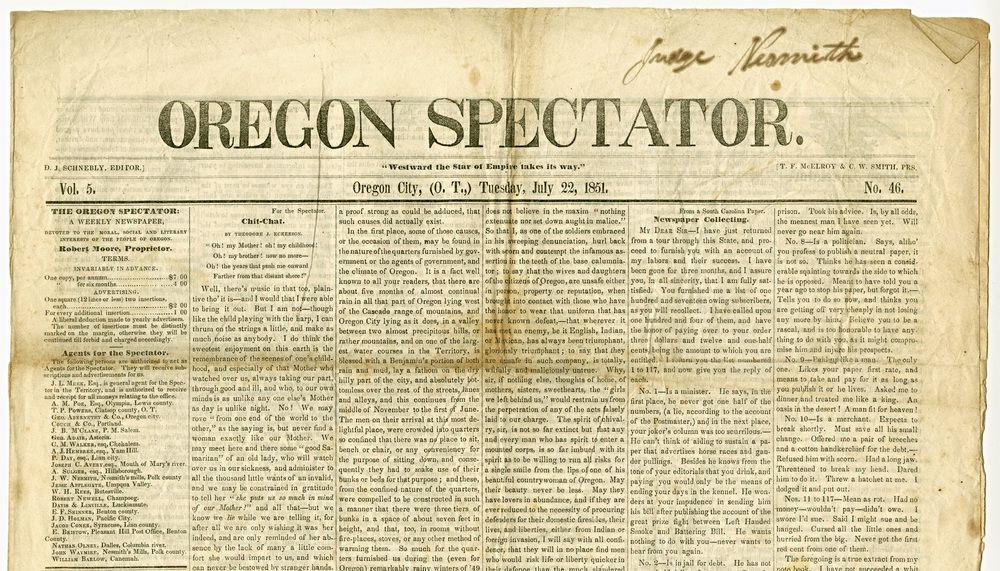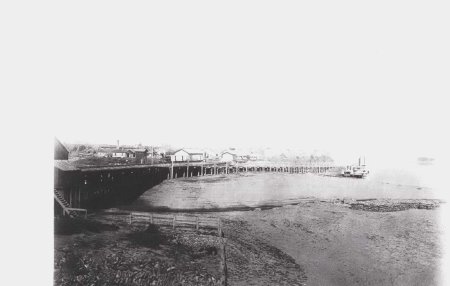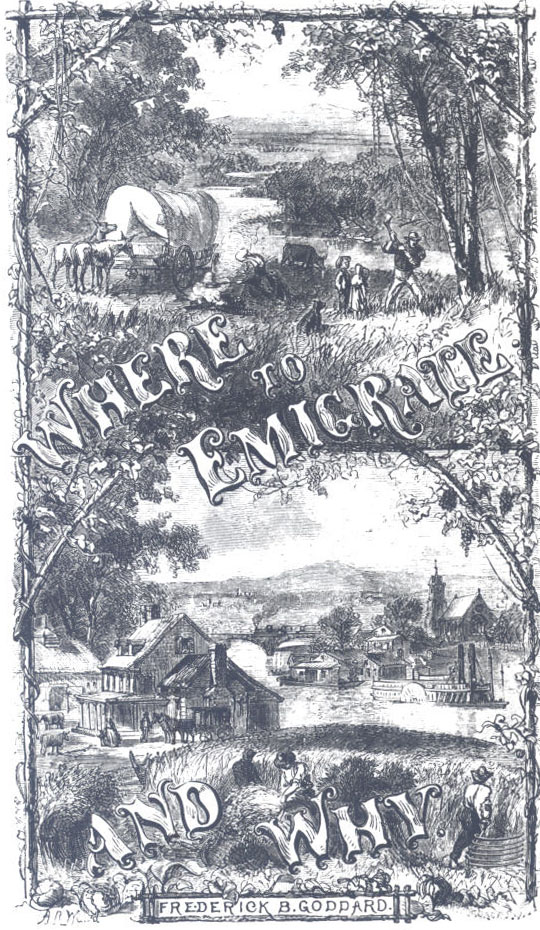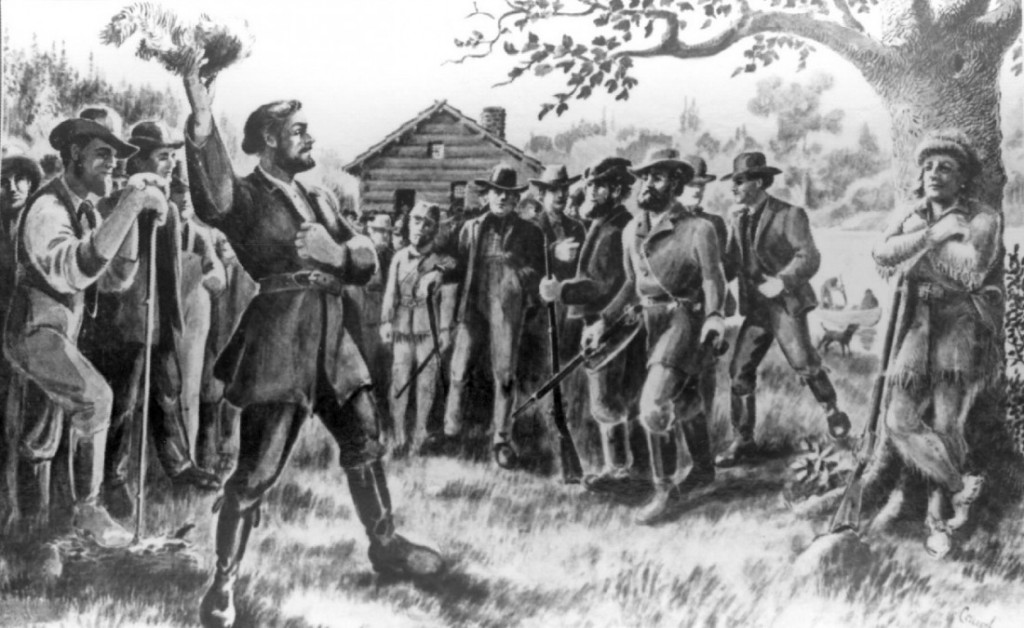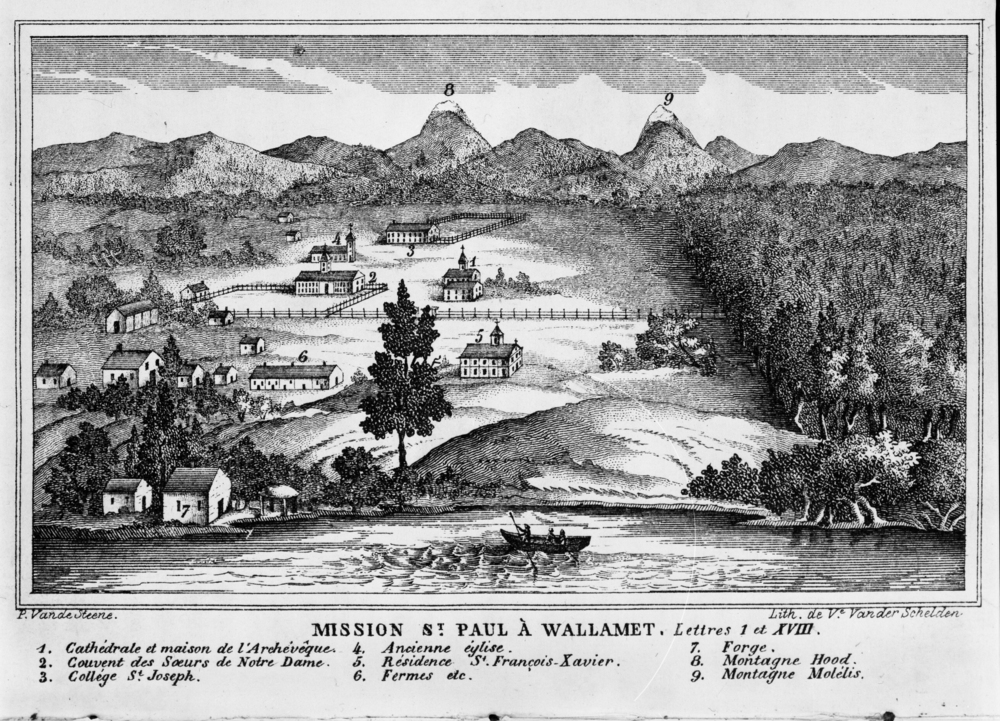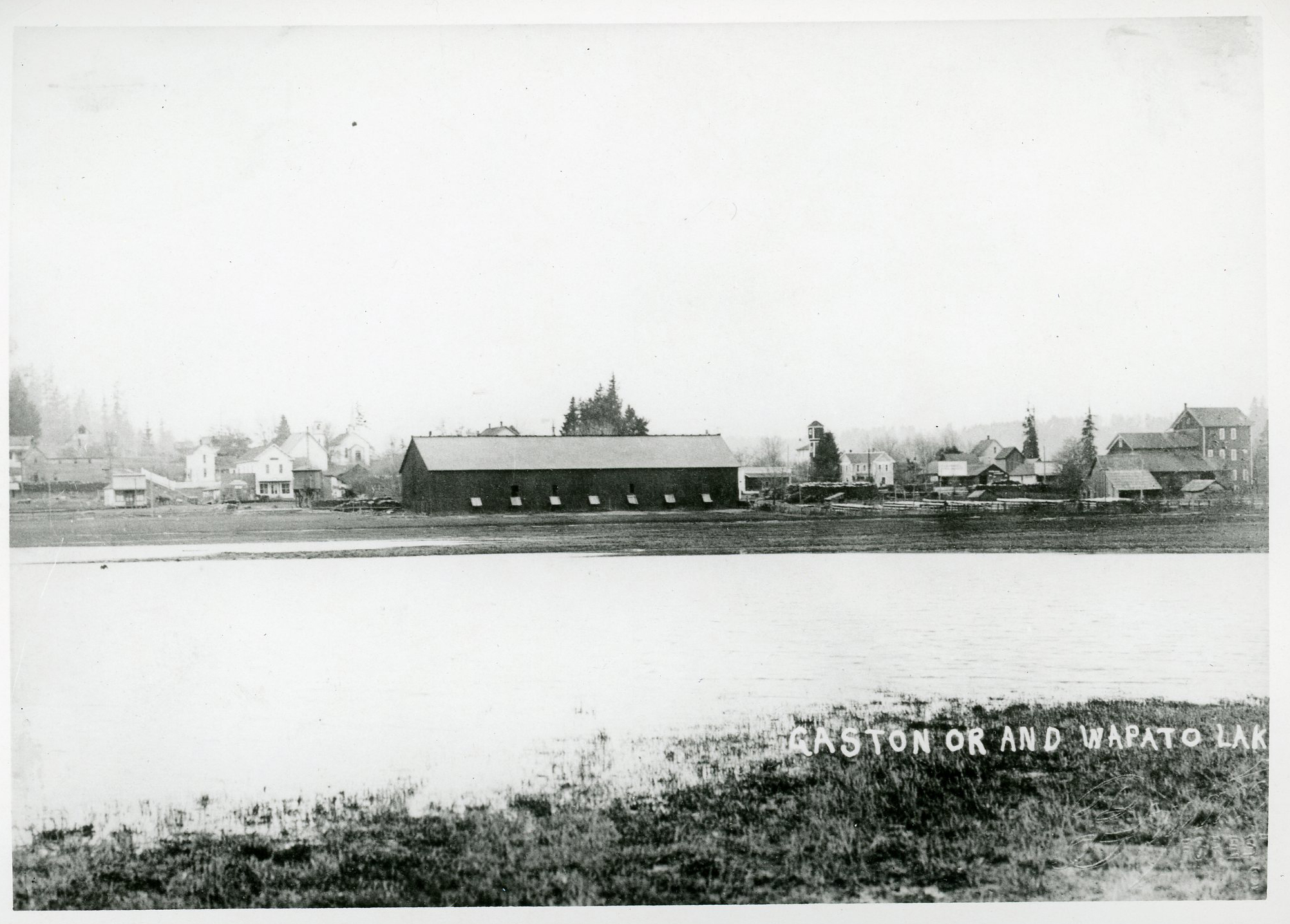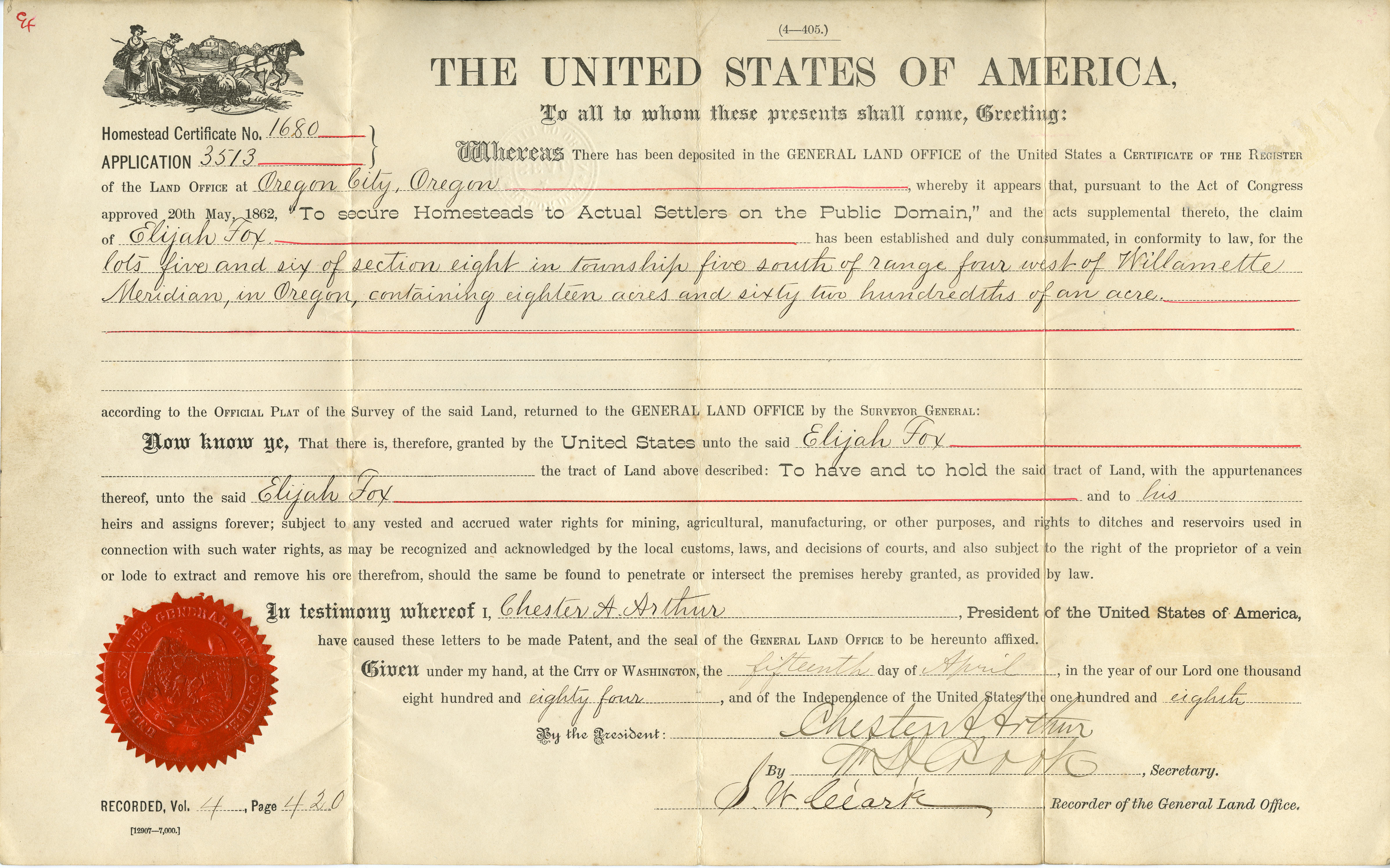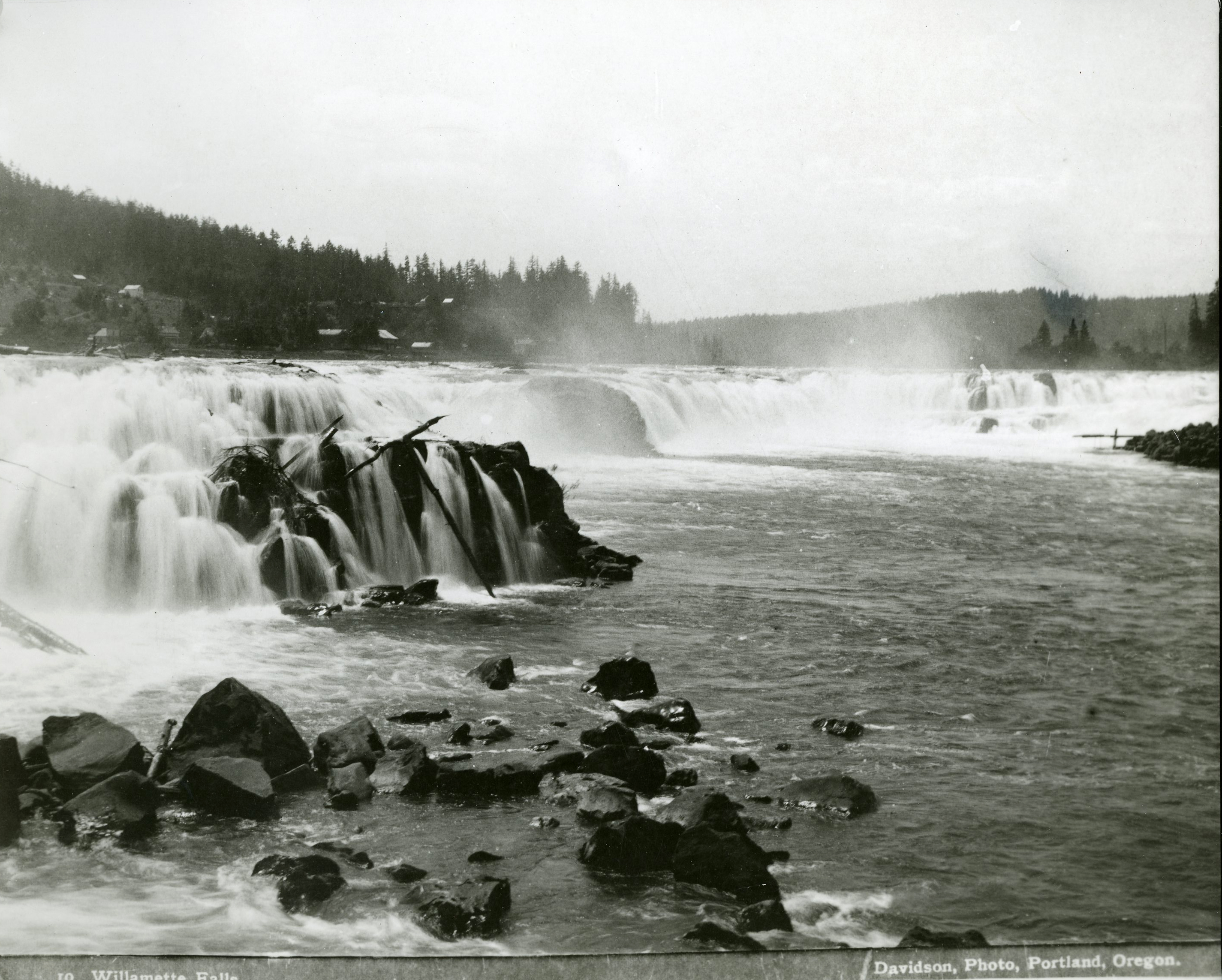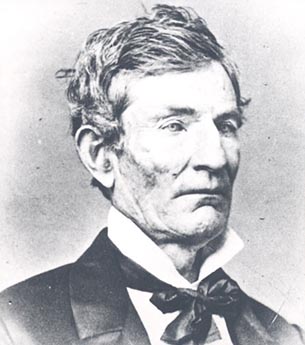Oregon City was the first incorporated city west of the Rocky Mountains and a main terminus of the Oregon Trail. Its historic center is along the east bank of the Willamette River, at the base of Willamette Falls. Oregon City is the seat of Clackamas County government and is known for its one-of-a-kind municipal elevator, the McLoughlin House, early hydroelectric power, and its pulp and paper and woolen mills.
For thousands of years, the area below Willamette Falls was home to the Clackamas Indians and was an important gathering place and fishing center. Salmon, steelhead, and lamprey in the river attracted Native fishers, including the Multnomah, Wasco, Tualatin, and Molala, who traded with the Clackamas for fish and fishing rights.
White fur trappers first explored the area near Willamette Falls in 1811. After the British-Canadian Hudson’s Bay Company in 1824 established Fort Vancouver, about twenty-five miles to the north on the Columbia River, Chief Factor John McLoughlin showed interest in land at the base of the falls. In 1829, he claimed two square miles at the site and built three houses and a millrace, establishing the first permanent white settlement in the Willamette Valley. McLoughlin encouraged white traders, missionaries, and emigrants to settle in the valley, and some set up residence at Willamette Falls, strengthening the American presence there. He platted the town of Willamette Falls in 1842, and Oregon’s Provisional Government incorporated it as Oregon City two years later.
The early town was built on a strip of land between Willamette Falls and Abernethy Creek to the north, the Willamette River to the west, and Singer Hill Bluff, rising one hundred feet or more, to the east. As the main terminus of the Oregon Trail, the region became a hub of American settlement efforts. Over time, Oregon City developed on two levels, on the riverbank and on Singer Bluff (named for William Singer, who ran a flour mill on the bluff in the 1880s). The six buildings constructed by 1843 soon became inadequate; by 1845, up to 100 structures housed the town’s 300 primarily new residents.
The earliest residents included businessmen and missionaries, many of whom took on significant political roles in the provisional and territorial governments and in the efforts toward statehood. The Roman Catholic church established its first diocese in Oregon City in 1843, and the Sisters of Notre Dame de Namur built the Young Ladies’ Academy in 1848. The city was the site of one of the earliest Methodist churches on the West Coast, built in 1843. Protestant “reinforcements” sent west by the Missionary Society of the Methodist Episcopal Church were instrumental in the establishment of Oregon City, including George Abernethy, who managed a store and a sawmill and was elected provisional governor.
The falls and its proximity to nearby farming settlements in French Prairie attracted merchants, and their ships carried wheat and other agricultural goods from the Willamette Valley to the Columbia River. In 1845, the Oregon Provisional Government named Oregon City as its capital. Despite the growing influence of Americans in the valley and their interest in claiming McLouglin's land, McLoughlin and his family relocated to the town a year later and built a new house, designed and constructed by William H. Gray, likely with McLoughlin’s assistance. At about the same time, Abernethy recruited William G. T’Vault to edit the Oregon Spectator in Oregon City, the first printed newspaper west of the Rocky Mountains. By 1850, the town had a non-Native population of 697, making it the most populous city in the territory.
Oregon’s territorial capital was moved to Salem in 1852, but Oregon City briefly retained its importance to territorial administration. In 1851, the federal government opened its first General Land Office in Oregon at Oregon City, providing a place to apply for land ownership and to validate land claims made before the Donation Land Act of 1850.
The Native population in the area, which had once exceeded two thousand people, had been reduced to fewer than a hundred, as epidemic diseases such as smallpox and malaria decimated villages and as white settlers claimed Indian lands. Leaders signed a treaty in 1856 in which they ceded their homeland to the U.S. government in exchange for protected territory and subsistence rights. Most local Natives were removed to the Grand Ronde Reservation.
With the arrival of steamboats on the river in 1851, the town became a center of transportation and industry for communities above and below Willamette Falls. The same year, Portland, a few miles downriver, was growing in population, soon to be the dominant city in the region. By the 1860s, Oregon City’s economic focus was on flour and woolen and paper mills, and wood pulp and paper production would drive the city’s economy for more than a century. But Willamette Falls was a navigational impediment to large steamships transporting people and goods, and Portlanders took advantage of dredging technology in the 1860s to edge out other ports, such as Milwaukie, Linnton, and Oregon City. Portland continued to control much of the valley’s shipping and transportation network, diminishing Oregon City’s influence as an economic and political center.
The 1873 opening of the Willamette Falls Locks at West Linn, across the river from Oregon City, made it safer for commercial and recreational river traffic to navigate the falls. The population had slowly increased to over 4,000 by 1890 (Portland’s was over 200,000, for contrast), and some residents had moved to Singer Hill Bluff, creating neighborhoods at first connected only by traditional Native trails, crude roadways, or stairs.
The falls remained central to Oregon City’s economy and technological innovation, markedly so in 1889 when Willamette Falls Electric Company switched on the first long-distance transmission of DC (direct current) electricity in the United States, sending electricity between Willamette Falls and the City of Portland, approximately fourteen miles to the north (an alternating current line was connected to Portland in 1890). In 1893, electricity again played an important role in connecting Oregon City to Portland, this time with the region’s first interurban streetcar line.
The historical importance of Oregon City prompted residents to support one of the earliest acts of historic preservation in Oregon when the McLoughlin family house was rescued from demolition in 1909 and moved up to Singer Hill near present-day Seventh and Center Streets. The house was designated a National Historic Site in 1941, and the National Park Service took over management in 2003. Hundreds of Oregon City sites and structures have since been designated local or national historic sites in recognition of the city’s significance to early white settlement, including the Ermatinger House on 6th street, built in c.1843, making it one of the oldest houses in the state. (It is reportedly the site of the coin toss that named Portland.)
A Carnegie library was built in 1913, and the city’s first public elevator opened in 1915, giving people who lived on the bluff easier access to the main business district at river level. The steel and wood structure stood eighty-nine feet tall and operated on hydroelectric power. Its unreliability led to a concrete and steel replacement, powered by electricity, in 1955. The Oregon City elevator is still the only outdoor municipal elevator in the United States and the only to be designated a “vertical street.”
In 1922, an arched bridge over the Willamette River, designed by the Oregon State Highway Division’s chief engineer, Conde B. McCullough, replaced a wooden span built in 1888 to connect Oregon City to West Linn. McLoughlin Boulevard (now Highway 99 East) was completed in 1937, connecting Oregon City with Milwaukie and Portland to the north and a string of Willamette Valley towns to the south, including Canby and Woodburn. By then, mills operated on both sides of the river at Willamette Falls, and the expanded highway network strengthened the city’s ties to the pulp and paper industry.
Those industries began to decline in the 1970s, in part because of changes in timber management, but also because of concerns over the pollutants paper mills were dumping into the rivers and air. The Blue Heron paper mill, the last working mill in Oregon City, closed in 2011. The mill site, on land where the McLoughlin house once stood at the base of Willamette Falls, is now owned by the Confederated Tribes of the Grand Ronde Community. As of 2021, the Tribes were part of the Willamette Falls Legacy Project, an effort to restore access to the river while also recognizing the cultural and historic significance of the site.
Clackamas Community College opened its main campus in Oregon City in 1966 and in 2021 enrolled over 26,000 students. The town has transitioned from a timber-based economy to a focus on residential development for commuters to Portland and on heritage tourism. As a result, Oregon City has continued to grow, with new commercial and residential areas farther uphill and away from the bluff and downtown.
What began as McLoughlin’s two-square-mile town, was in 2020 a city of more than nine square miles and 37,554 residents.
-
![Lithograph of Oregon City, early 1845.]()
Oregon City, 1845, ba014134.
Lithograph of Oregon City, early 1845. Oreg. Hist. Soc. Research Libr., ba014134
-
![]()
Oregon City, 1866.
Oregon Historical Society Research Library, Org. Lot 500, A 270
-
![]()
George Abernethy's wholesale store, Oregon City, 1850s.
Oreg. Hist. Soc. Research Lib., ba014129
-
![Lot Whitcomb, Oregon City, 1850s]()
Lot Whitcomb, Oregon City, 1850s.
Lot Whitcomb, Oregon City, 1850s Courtesy Salem Public Library
-
![]()
Oregon City and Willamette Falls, 1867.
Oregon Historical Society Research Library, Carleton Watkins, Org. lot 93, 414
-
![]()
Oregon City, 1867.
Oregon Historical Society Research Library, Carleton Watkins, Org. lot 93, Mammoth, 411
-
![]()
Willamette Falls.
Oregon Historical Society Research Library, Org. Lot 500, A 295
-
![]()
Oregon City, Oregon Woolen Mills on the right, 1867.
Oregon Historical Society Research Library, Carleton Watkins, Org. lot 93, 416
-
![]()
Oregon City and Willamette Falls, 1870.
Oregon Historical Society Research Library, Org. Lot 500, A 296
-
![]()
Whitlock Store, Oregon City.
Oregon Historical Society Research Library, Org. Lot 500, A 294
-
![]()
Sketch of St. John the Apostle Church, Oregon City.
Courtesy Oregon Hist. Soc. Research Lib., Orhi4897
-
![Oregon City - West Linn bridge under construction, 1922.]()
Oregon City, bridge under construction, 1922, OrHi 094328.
Oregon City - West Linn bridge under construction, 1922. Oreg. Hist. Soc. Research Libr., OrHi 094328
-
![]()
Paper mills near the Oregon City Bridge and Willamette Falls, 1930.
Oregon Historical Society Research Library, Org. lot 151, PGE142-10
-
![]()
Hawley Pulp and Paper Mill, Oregon City, c.1930.
Oregon Historical Society Research Library, Journal, 371A5706
-
![]()
Interurban streetcar to Oregon City, #1096, 1930.
Oregon Historical Society Research Library, Org. Lot 151 PGE129
-
![]()
Oregon City, c. 1930.
Oregon Historical Society Research Library, Journal, 371A5709
-
![]()
John McLoughlin House, Oregon City, c. 1930.
Oregon Historical Society Research Library, Oregon Journal, 371N5707
-
![]()
Aerial of Oregon City and Willamette Falls, c. 1948.
Oregon Historical Society Research Library, Al Monner, Org. Lot 1284
-
![]()
Paper mills on Willamette Falls near Oregon City and West Linn.
Courtesy Oregon Hist. Soc. Research Lib., 020907
Related Entries
-
![Carnegie Libraries in Oregon]()
Carnegie Libraries in Oregon
Of the 1,679 public library buildings funded in the United States by An…
-
![Clackamas Community College]()
Clackamas Community College
In May 1966, following four years of work by a grassroots citizens’ pla…
-
![Clackamas Hydroelectric Project]()
Clackamas Hydroelectric Project
The Clackamas River Hydroelectric Project is a series of four powerhous…
-
![Confederated Tribes of Grand Ronde]()
Confederated Tribes of Grand Ronde
The Confederated Tribes of Grand Ronde Community of Oregon is a confede…
-
![George Abernethy (1807-1877)]()
George Abernethy (1807-1877)
George Abernethy cut a wide swath through Oregon's religious, economic,…
-
![Great Reinforcement (1840)]()
Great Reinforcement (1840)
One of the signal immigrations to Oregon came by sea in 1840, years bef…
-
![Hudson's Bay Company]()
Hudson's Bay Company
Although a late arrival to the Oregon Country fur trade, for nearly two…
-
![John McLoughlin (1784-1857)]()
John McLoughlin (1784-1857)
One of the most powerful and polarizing people in Oregon history, John …
-
![McLoughlin House Unit of Fort Vancouver National Historic Site]()
McLoughlin House Unit of Fort Vancouver National Historic Site
One of the grandest and most elaborate homes in Oregon when it was buil…
-
![Milwaukie]()
Milwaukie
Located at the northern edge of Clackamas County and on the east bank o…
-
![Modeste Demers (1809-1871)]()
Modeste Demers (1809-1871)
Modeste Demers answered the missionary call to Oregon in 1838, just two…
-
![Molalla Peoples]()
Molalla Peoples
The name Molalla ([moˈlɑlə, ˈmolɑlə], usually spelled Molala by anthrop…
-
![Oregon Spectator]()
Oregon Spectator
Established in 1846, the Oregon Spectator was the first newspaper publi…
-
![Oregon Steam Navigation Company]()
Oregon Steam Navigation Company
Among early business enterprises in Oregon, the Oregon Steam Navigation…
-
![Oregon Trail]()
Oregon Trail
Introduction In popular culture, the Oregon Trail is perhaps the most …
-
![Provisional Government]()
Provisional Government
The Provisional Government, created in May-July 1843, was the first gov…
-
![Sisters of Notre Dame de Namur]()
Sisters of Notre Dame de Namur
Early in January 1844, six Sisters of Notre Dame de Namur (SNDdeN) depa…
-
![Tualatin peoples]()
Tualatin peoples
Tualatin (properly pronounced 'twälə.tun in English) was the name of a …
-
![U.S. General Land Office in Oregon, ca. 1850-1946]()
U.S. General Land Office in Oregon, ca. 1850-1946
With the acquisition of the Oregon Country in 1846, the United States w…
-
![Willamette Falls]()
Willamette Falls
The largest falls in Oregon and the sixth in the United States by volum…
-
![William Green T'Vault (1809-1869)]()
William Green T'Vault (1809-1869)
William Green T’Vault had a wide-ranging career in early Oregon. A truc…
Related Historical Records
Map This on the Oregon History WayFinder
The Oregon History Wayfinder is an interactive map that identifies significant places, people, and events in Oregon history.
Further Reading
Lewis, David G. "People Above the Falls: Canemah Village." https://ndnhistoryresearch.com/2014/12/15/clackamas-people-of-willamette-falls/.
"Brief History of Oregon City," https://www.orcity.org/planning/brief-history-oregon-city, 2000.
Hillegas-Elltng, James V. Speaking from the River: Confronting Pollution on the Willamette, 1920s-1970s. Corvallis: Oregon State University Press, 2018.
Throckmorton, Arthur L. Oregon Argonauts: Merchant Adventurers on the Western Frontier. Portland: Oregon Historical Society, 1961.
Willamette Falls Legacy Project. https://www.willamettefallslegacy.org/.
Wollner, Craig. Electrifying Eden. Portland General Electric, 1889-1965. Portland: Oregon Historical Society Press, 1990.
Gibson, James R. The Promised Land: The Agricultural Opening of the Oregon Country, 1786-1846. Seattle: University of Washington Press, 1985.



